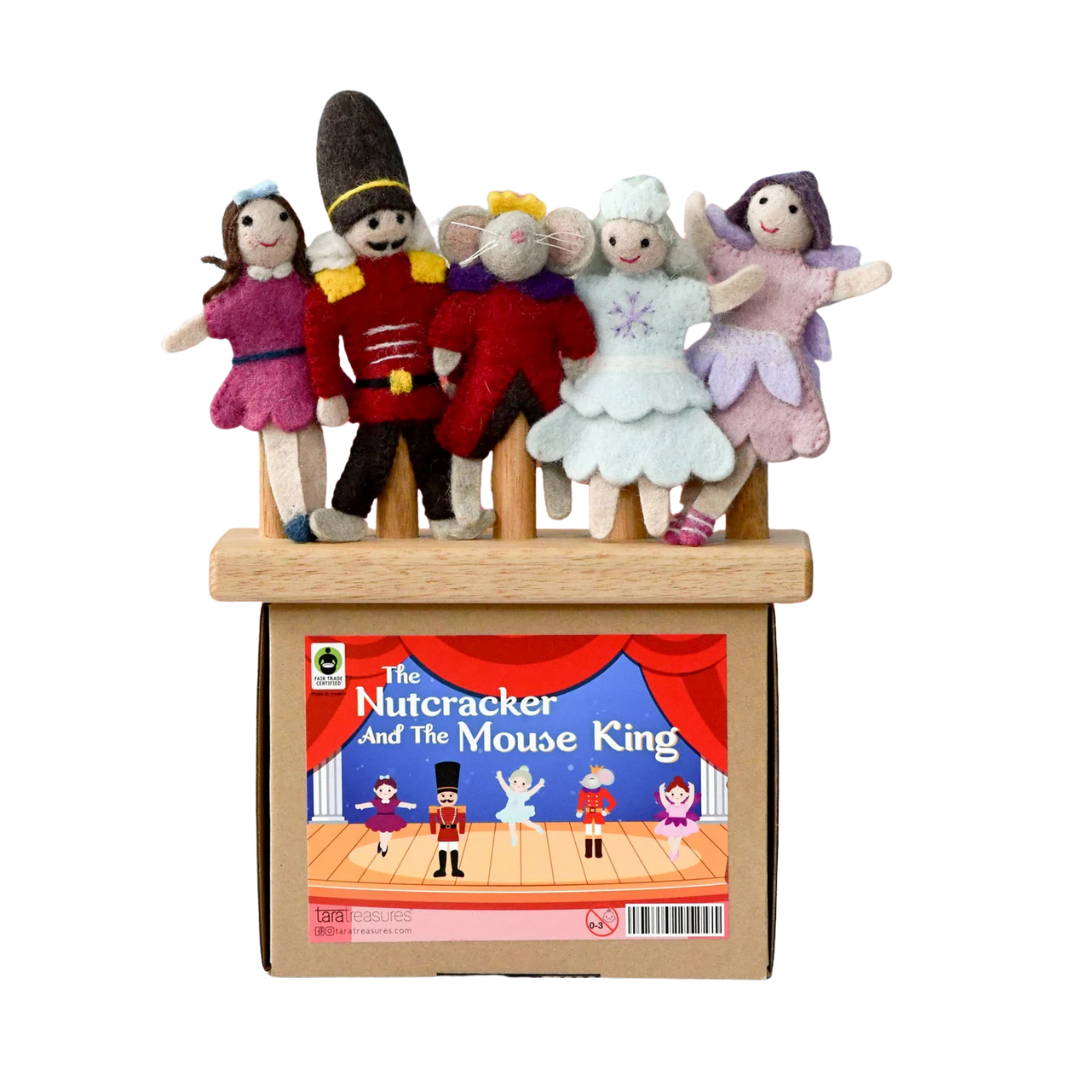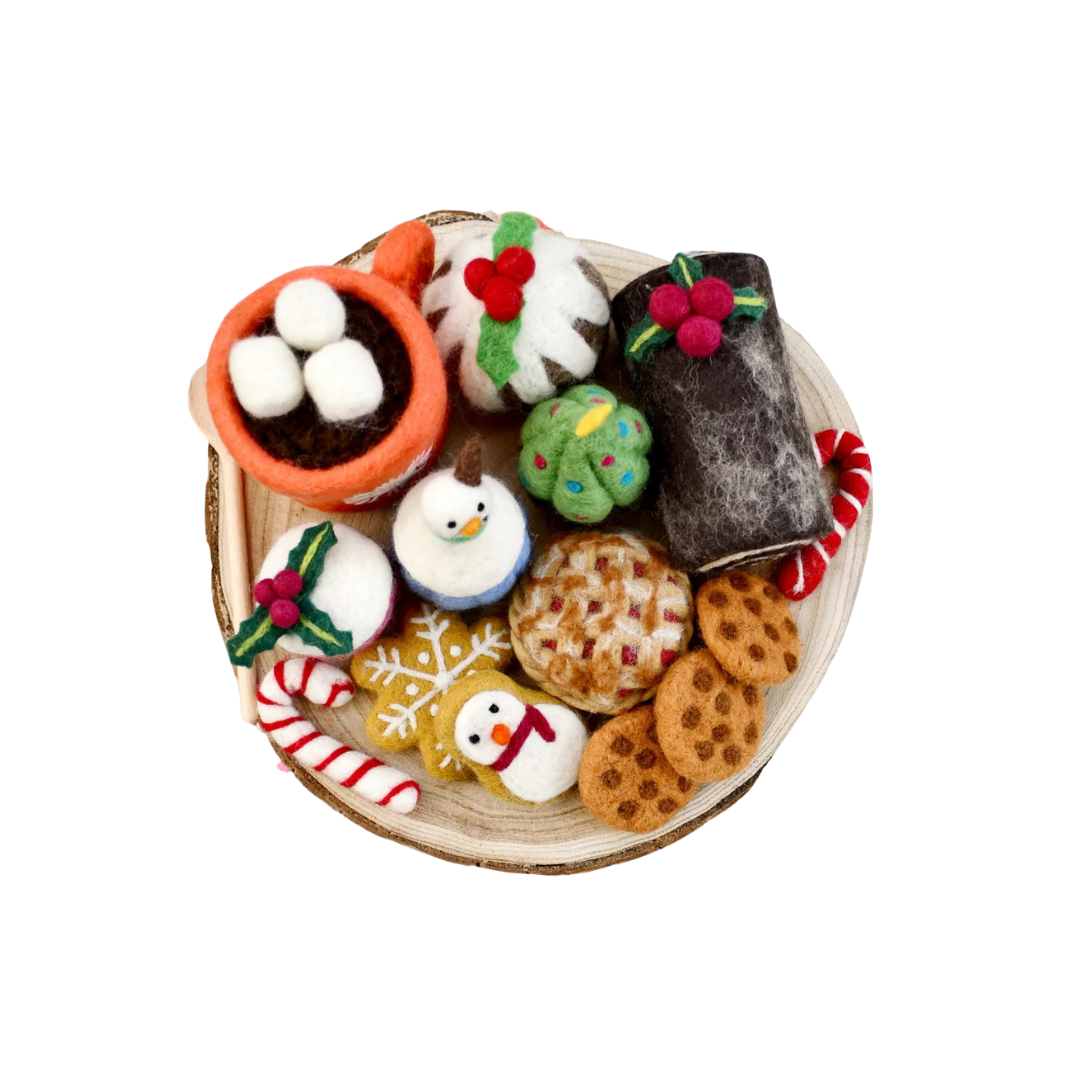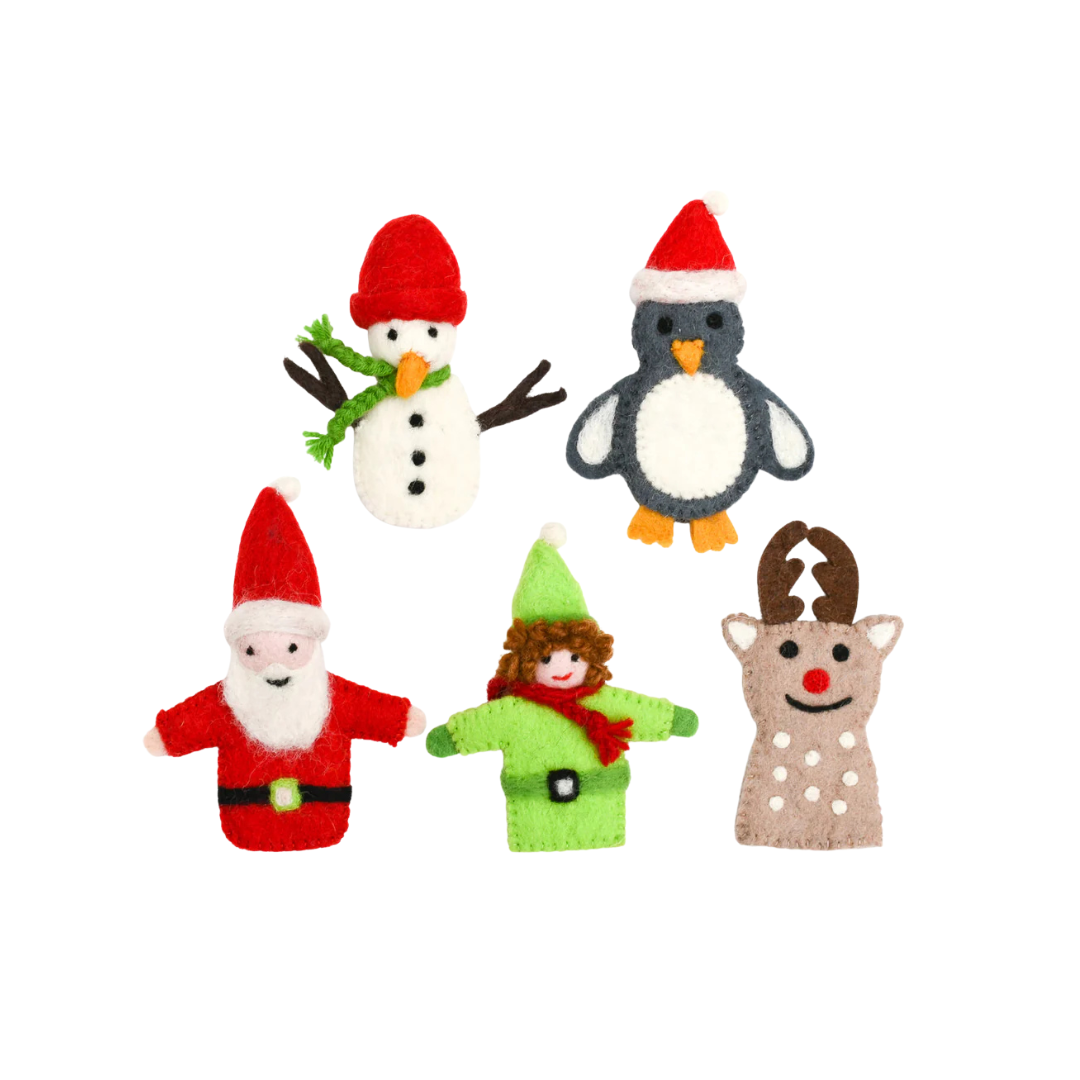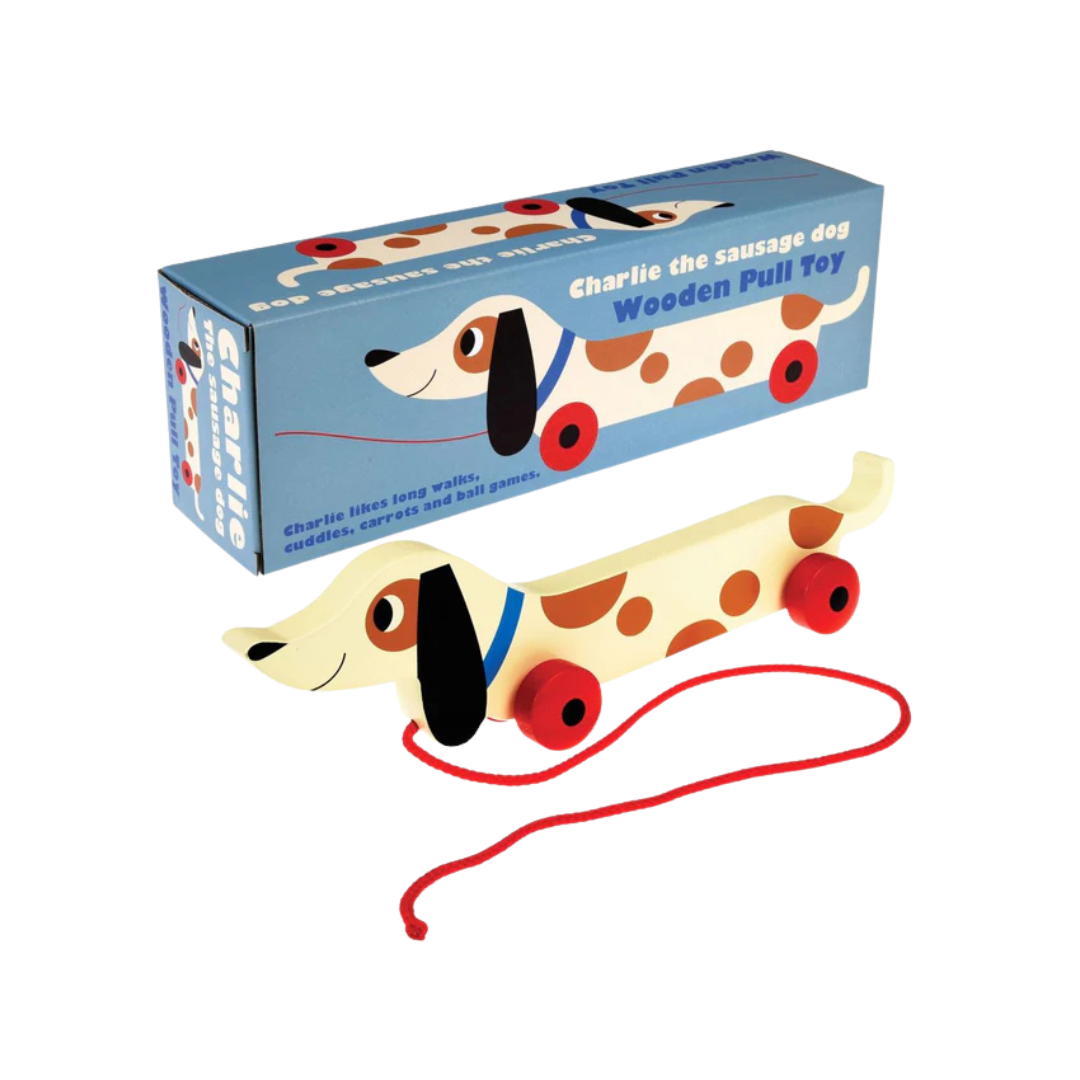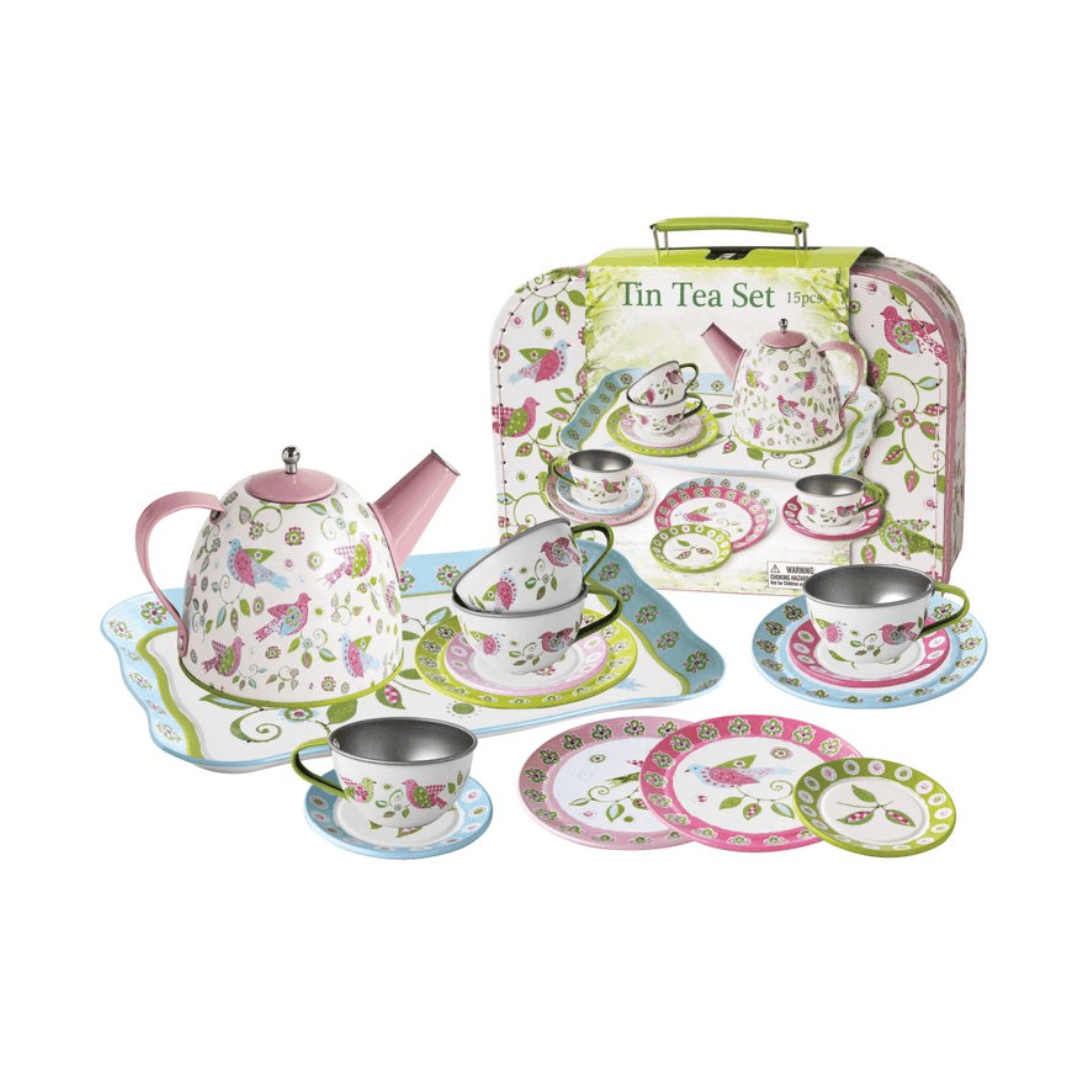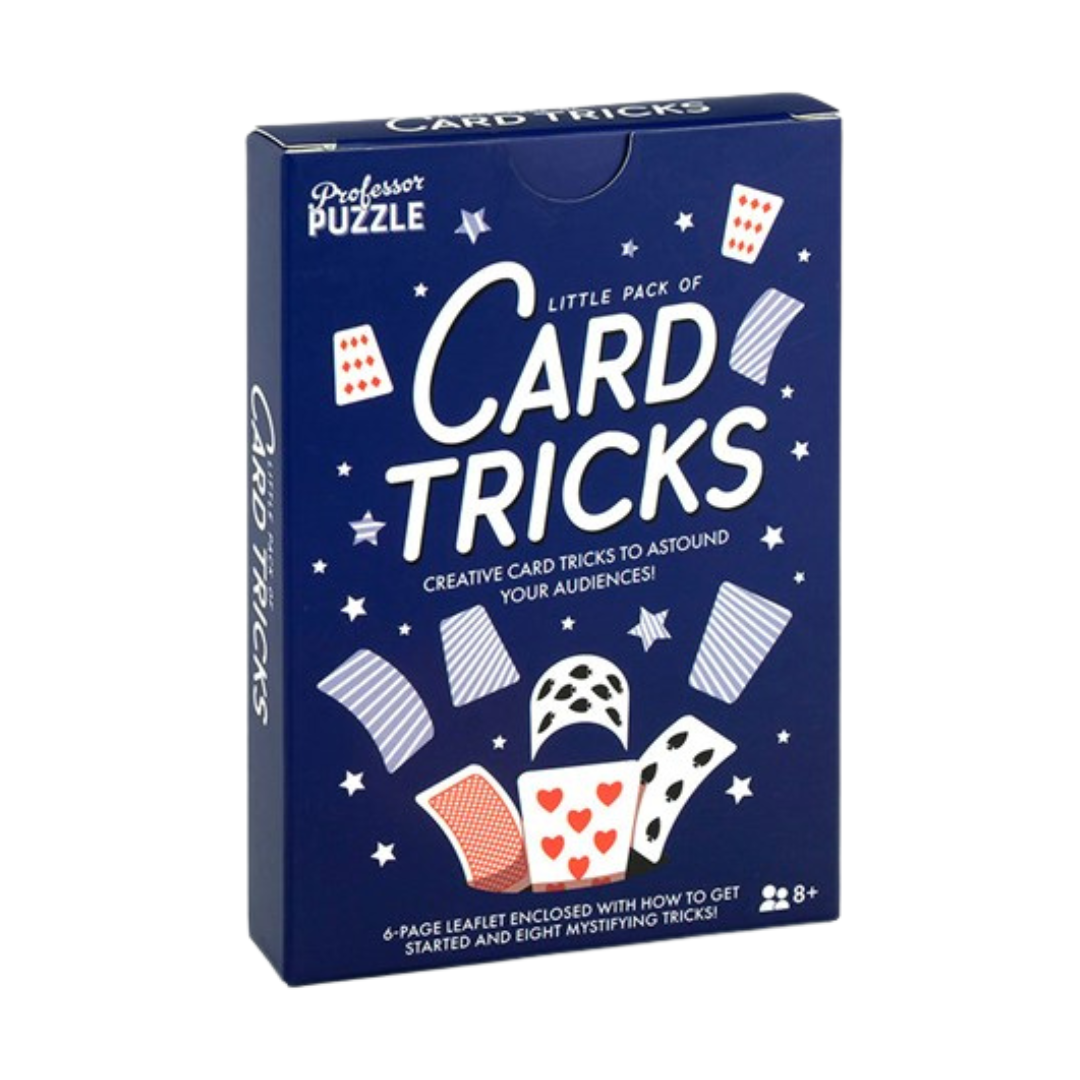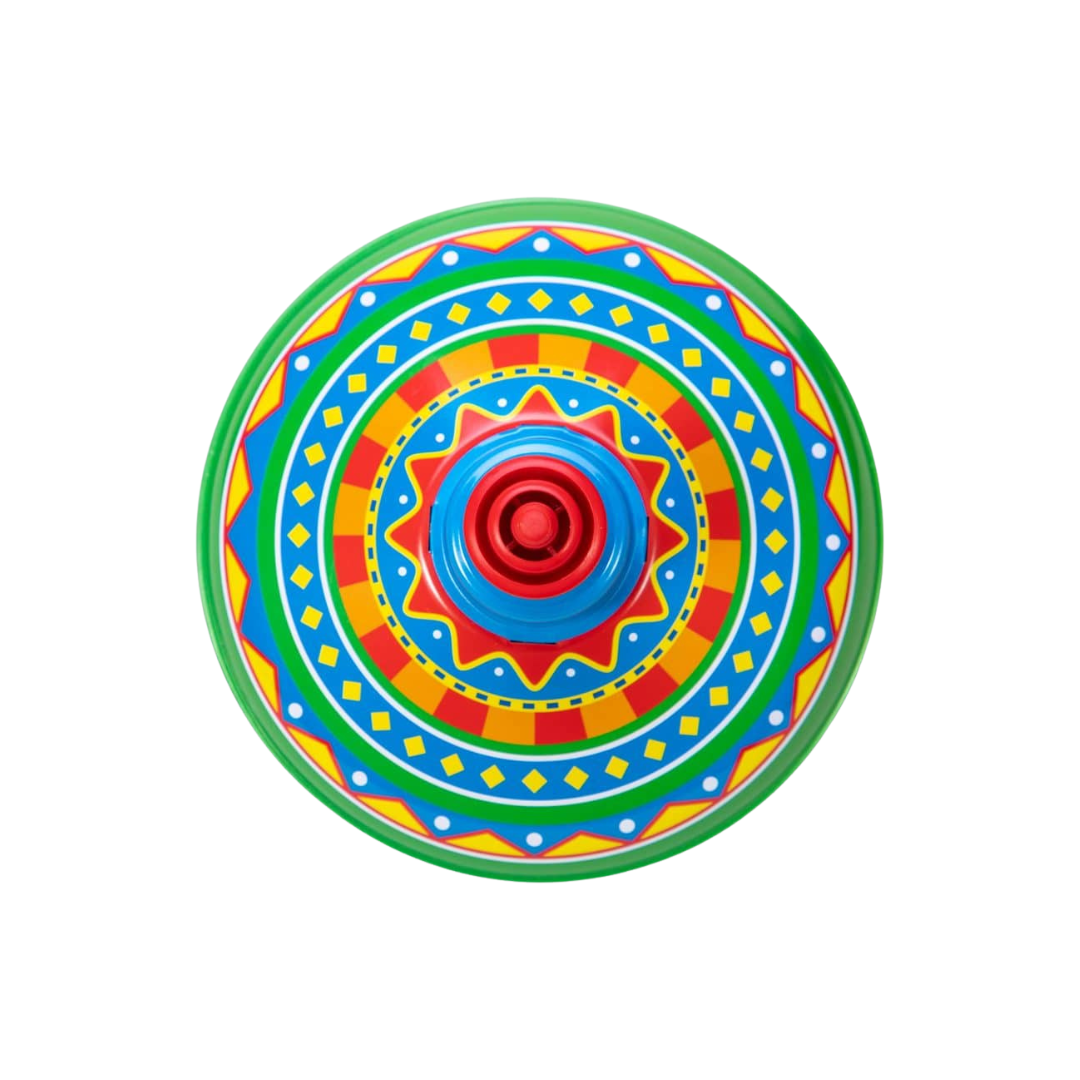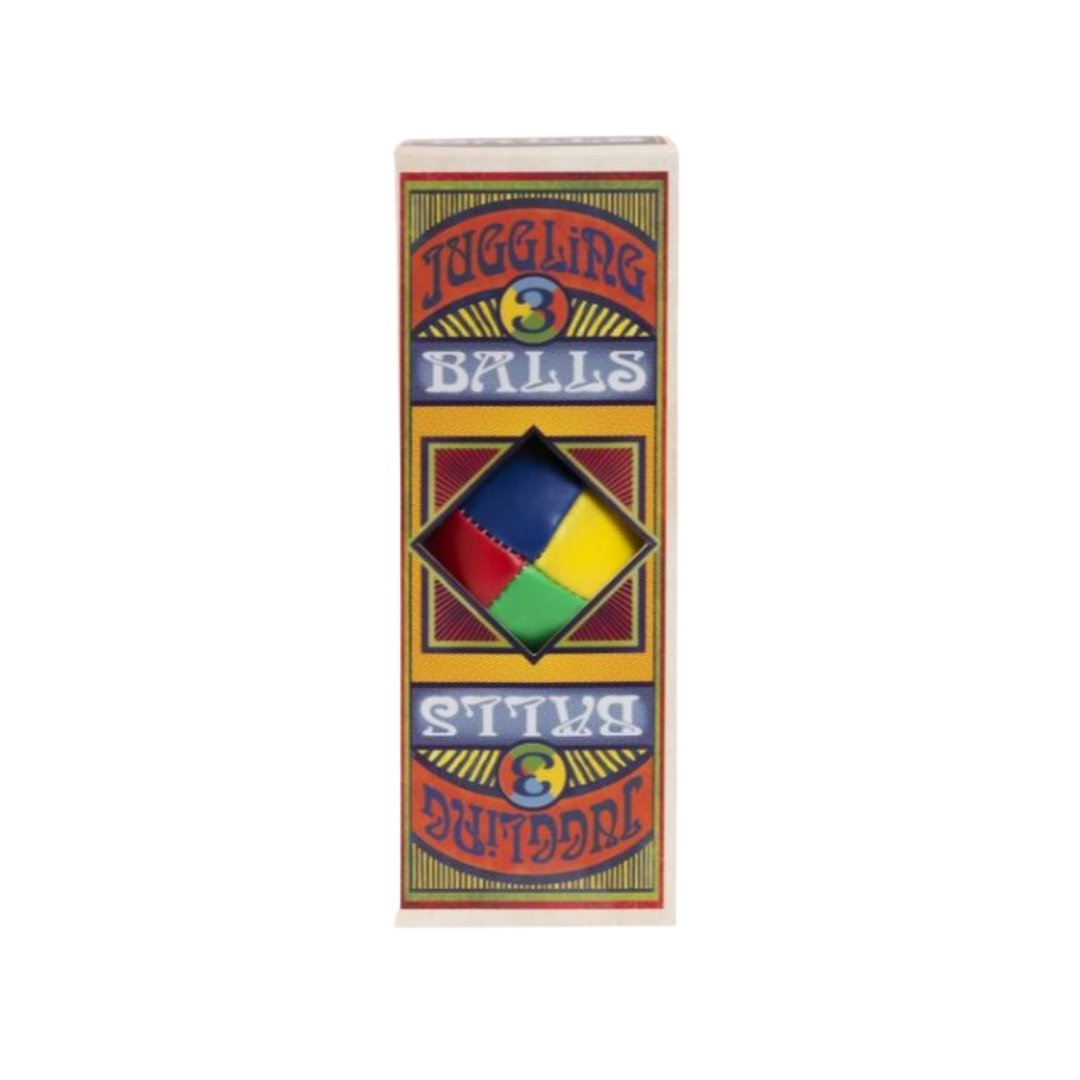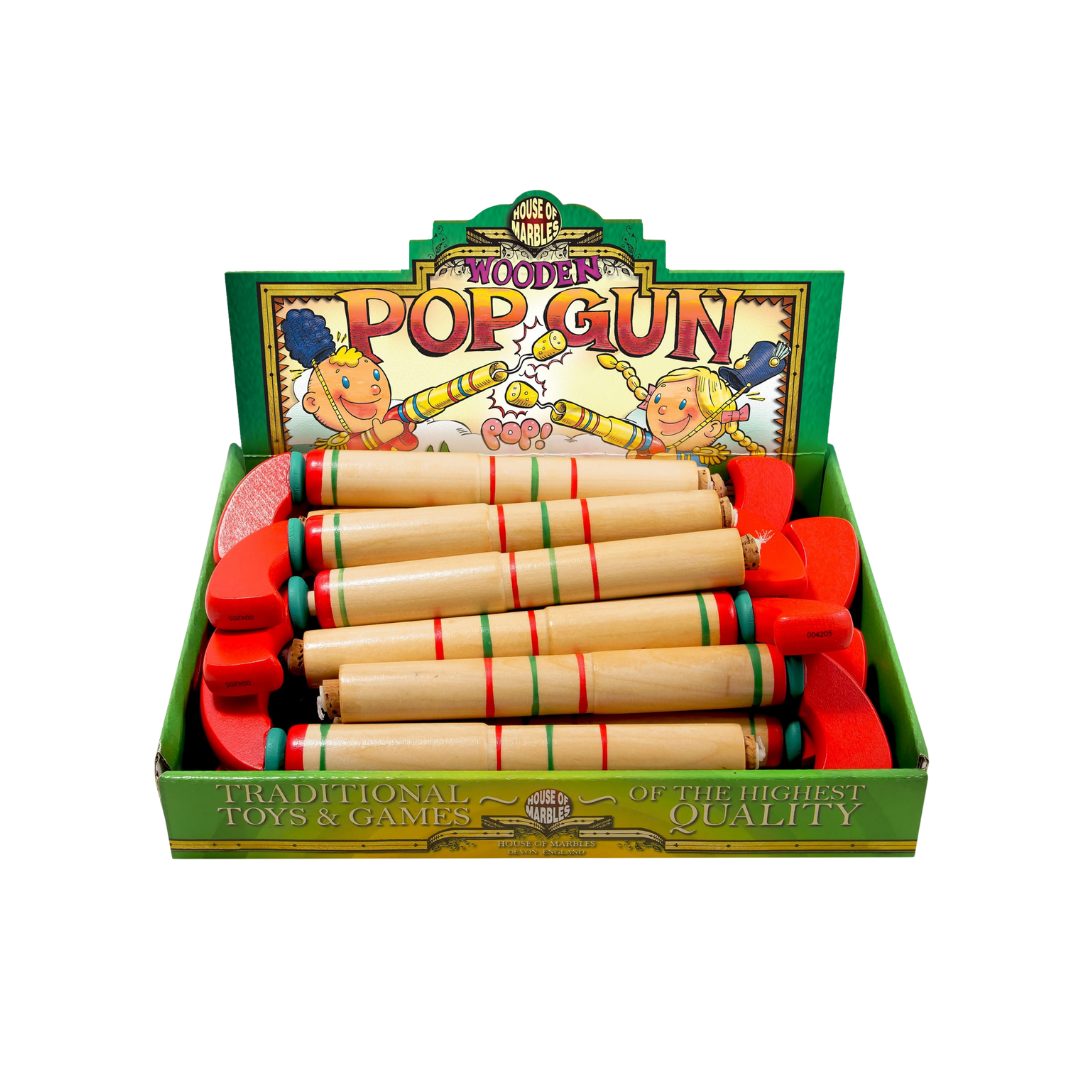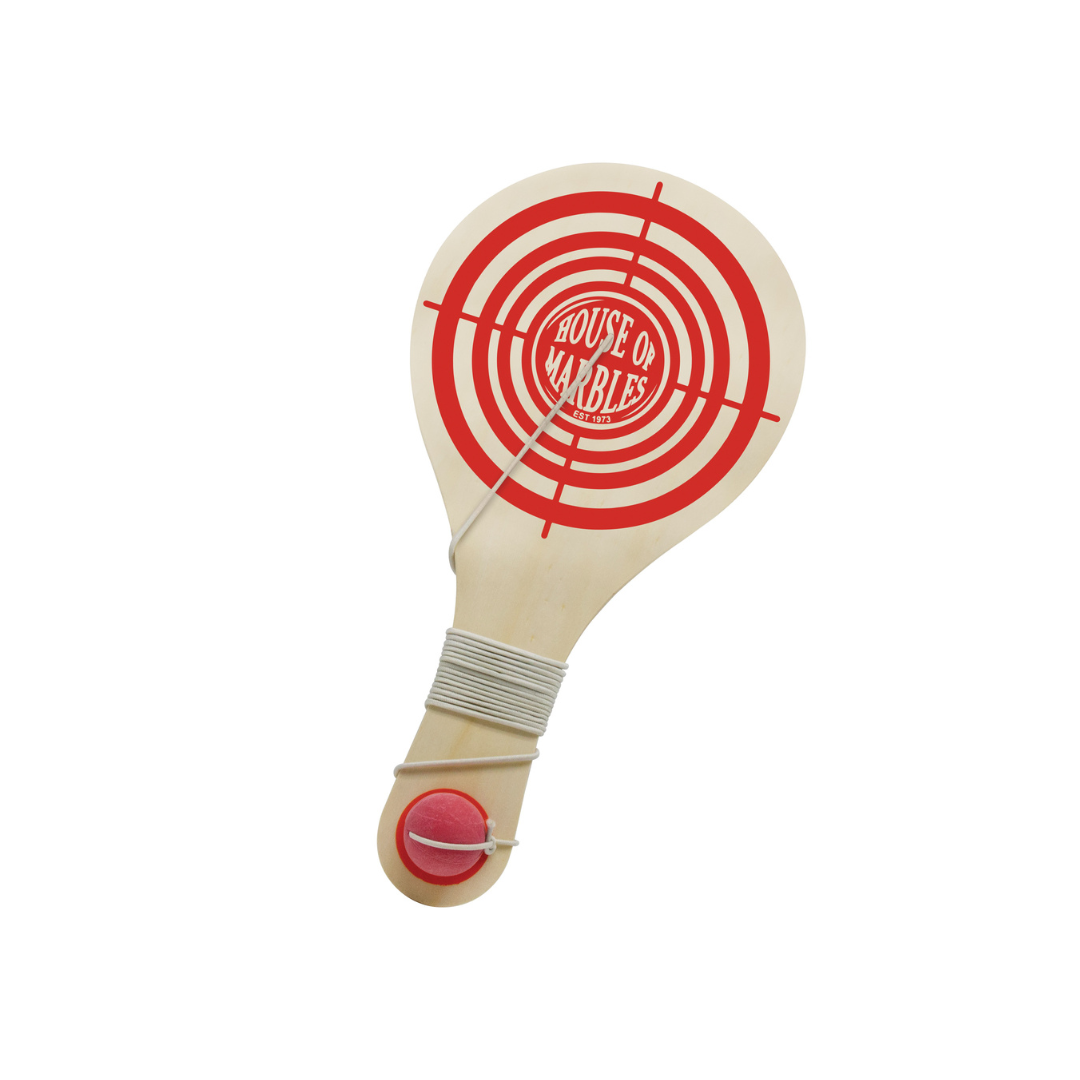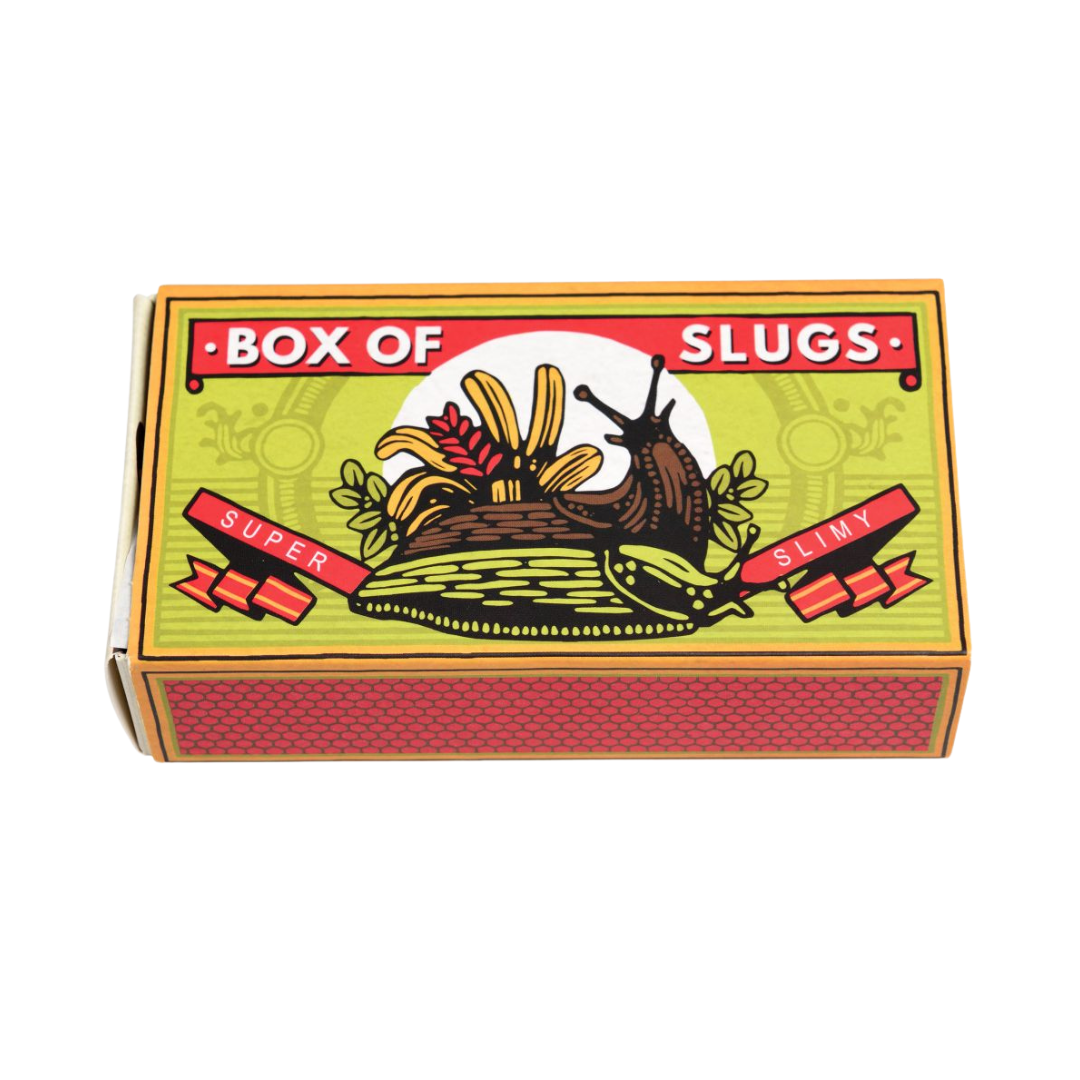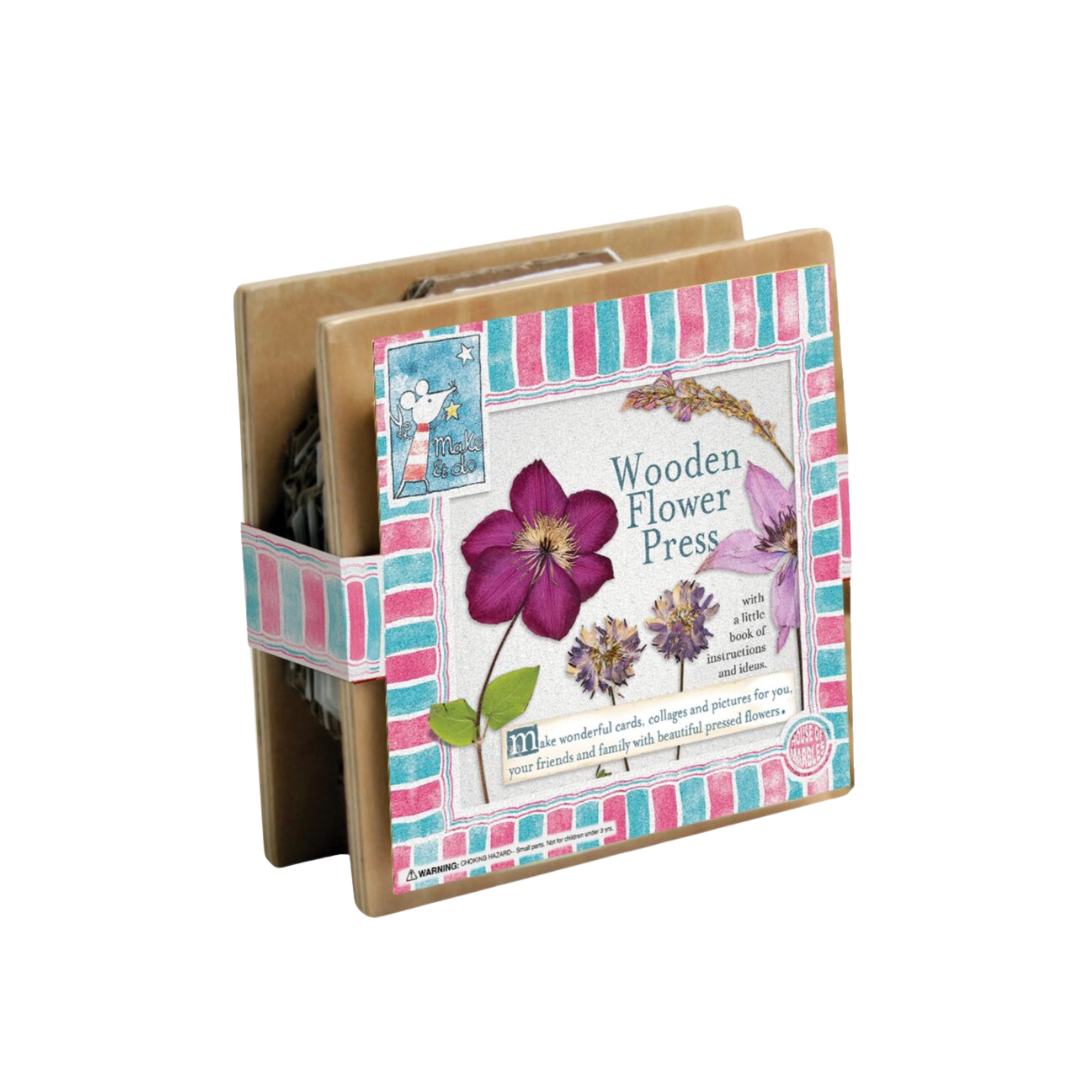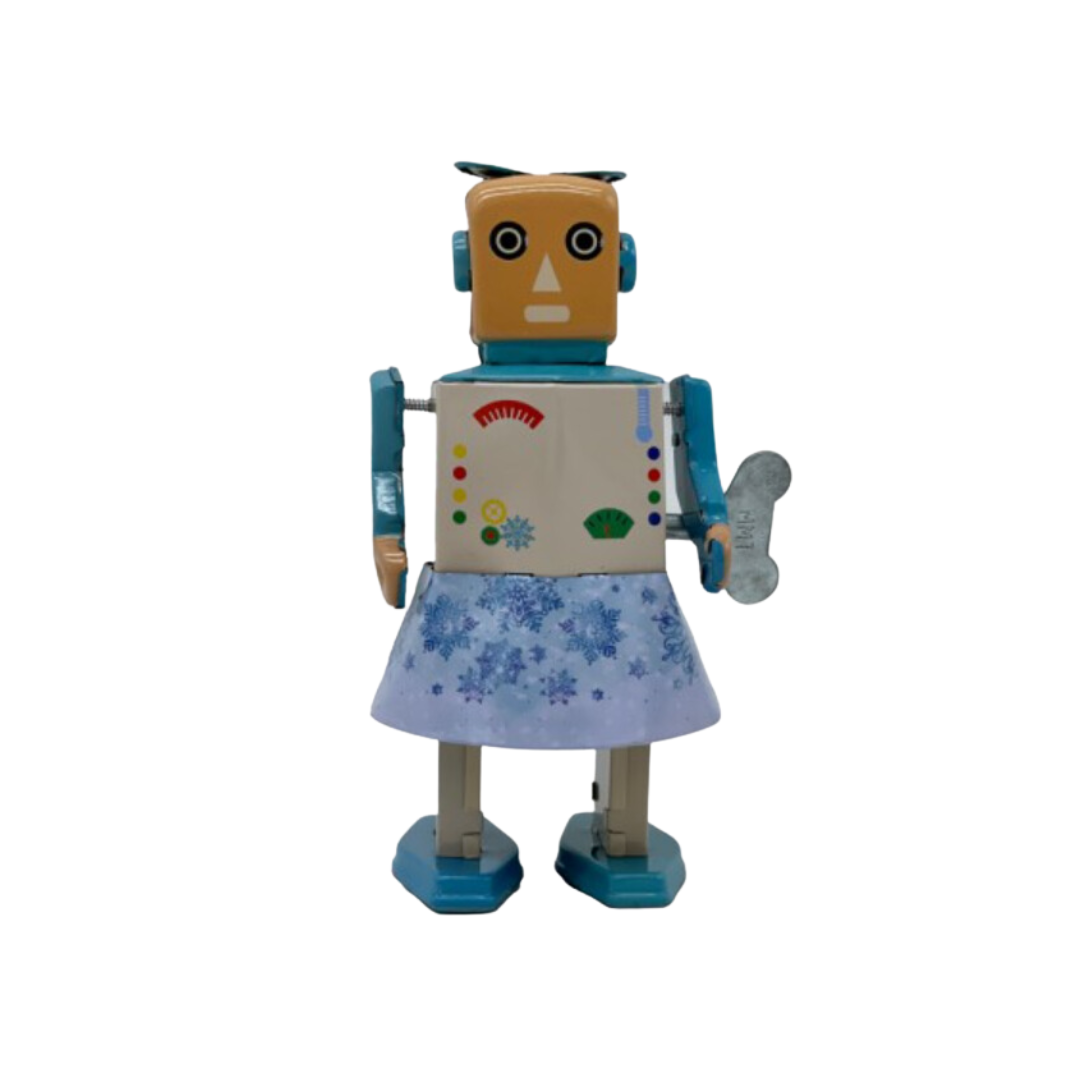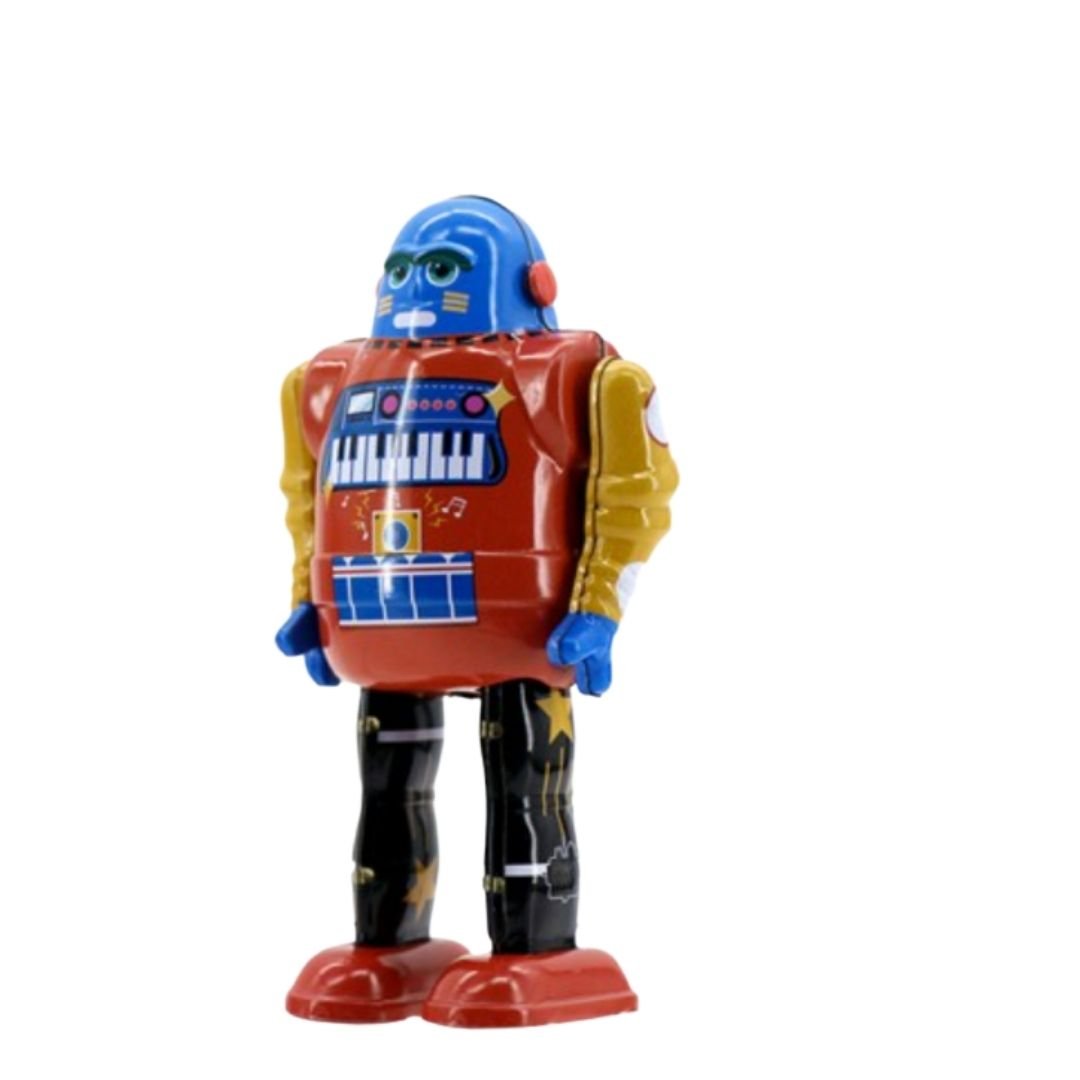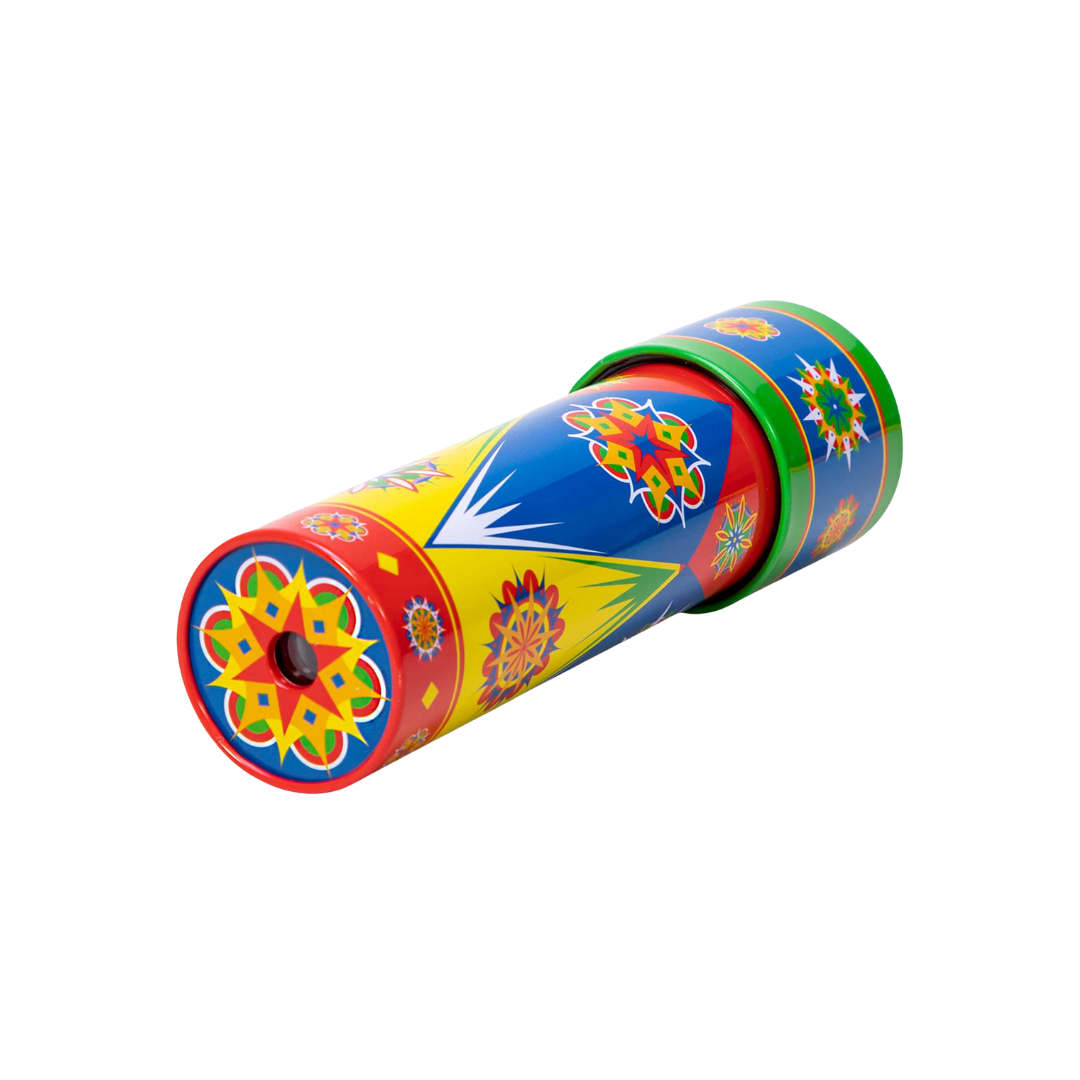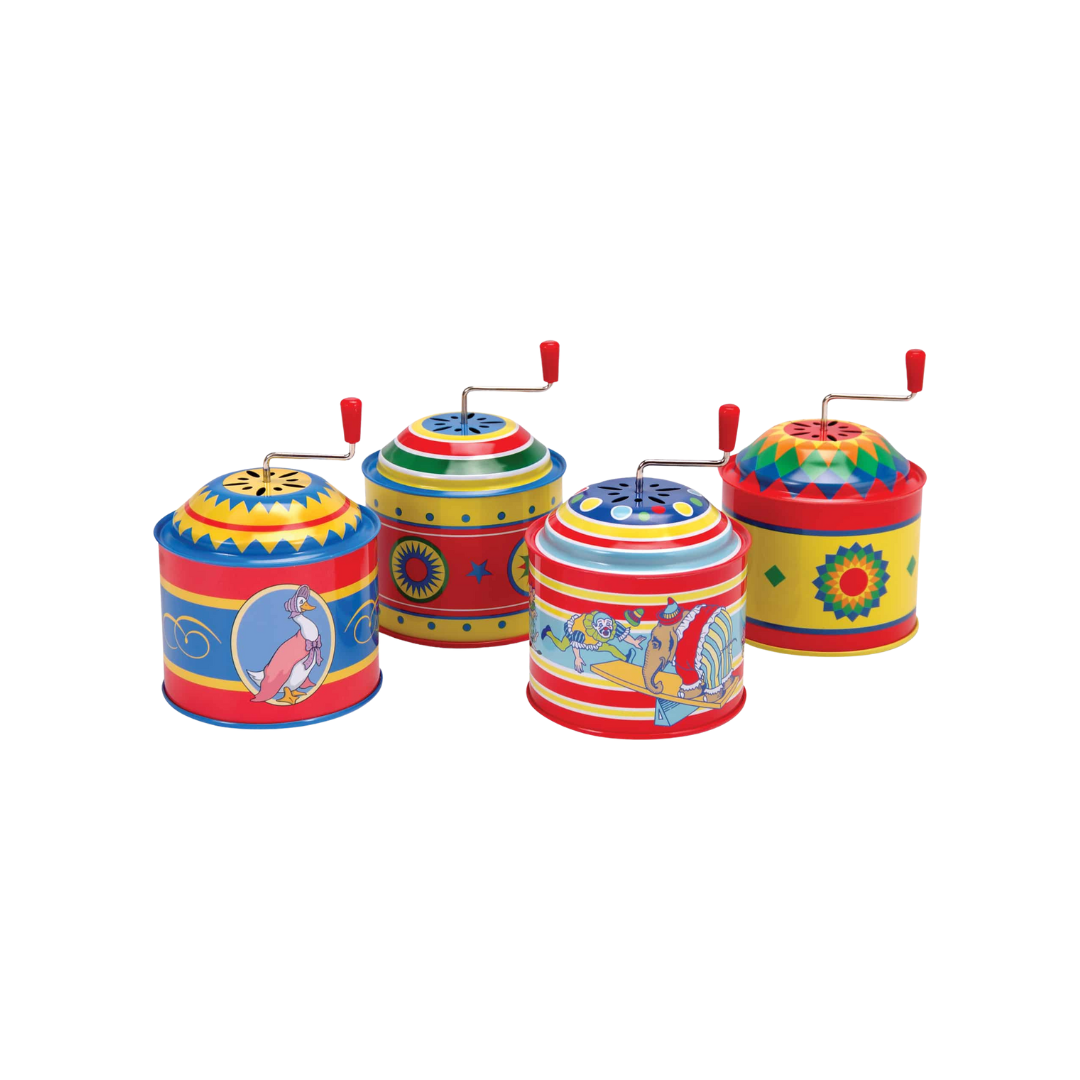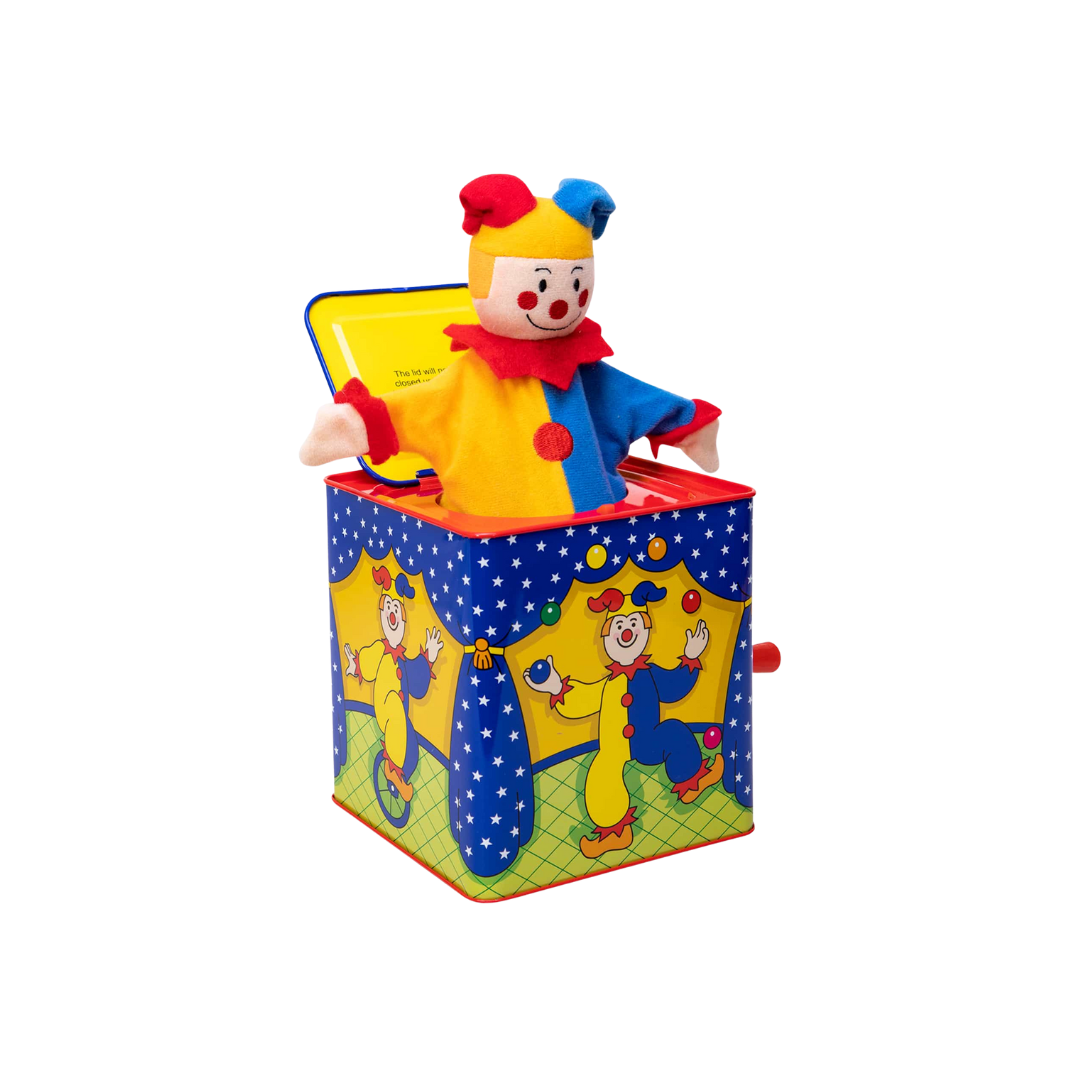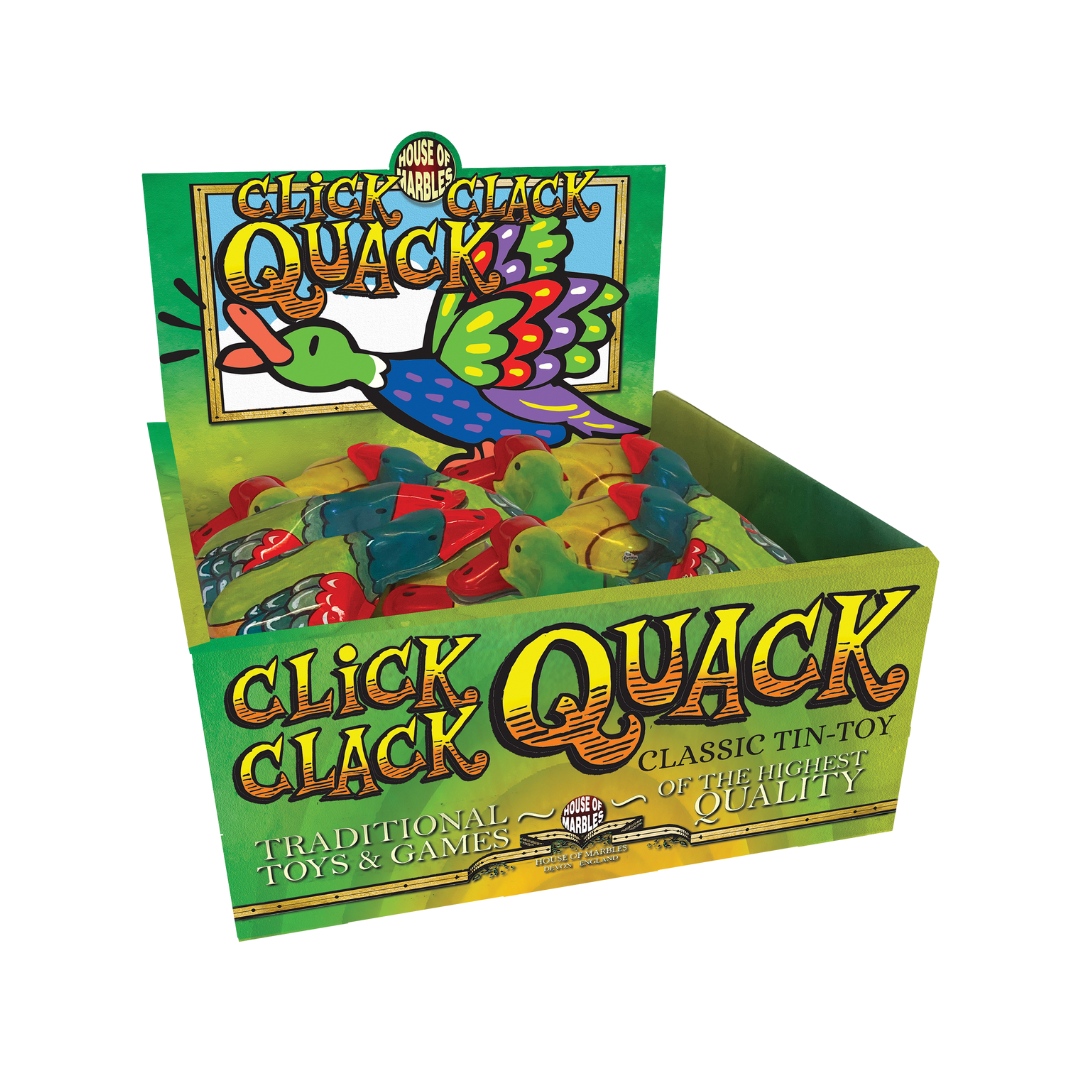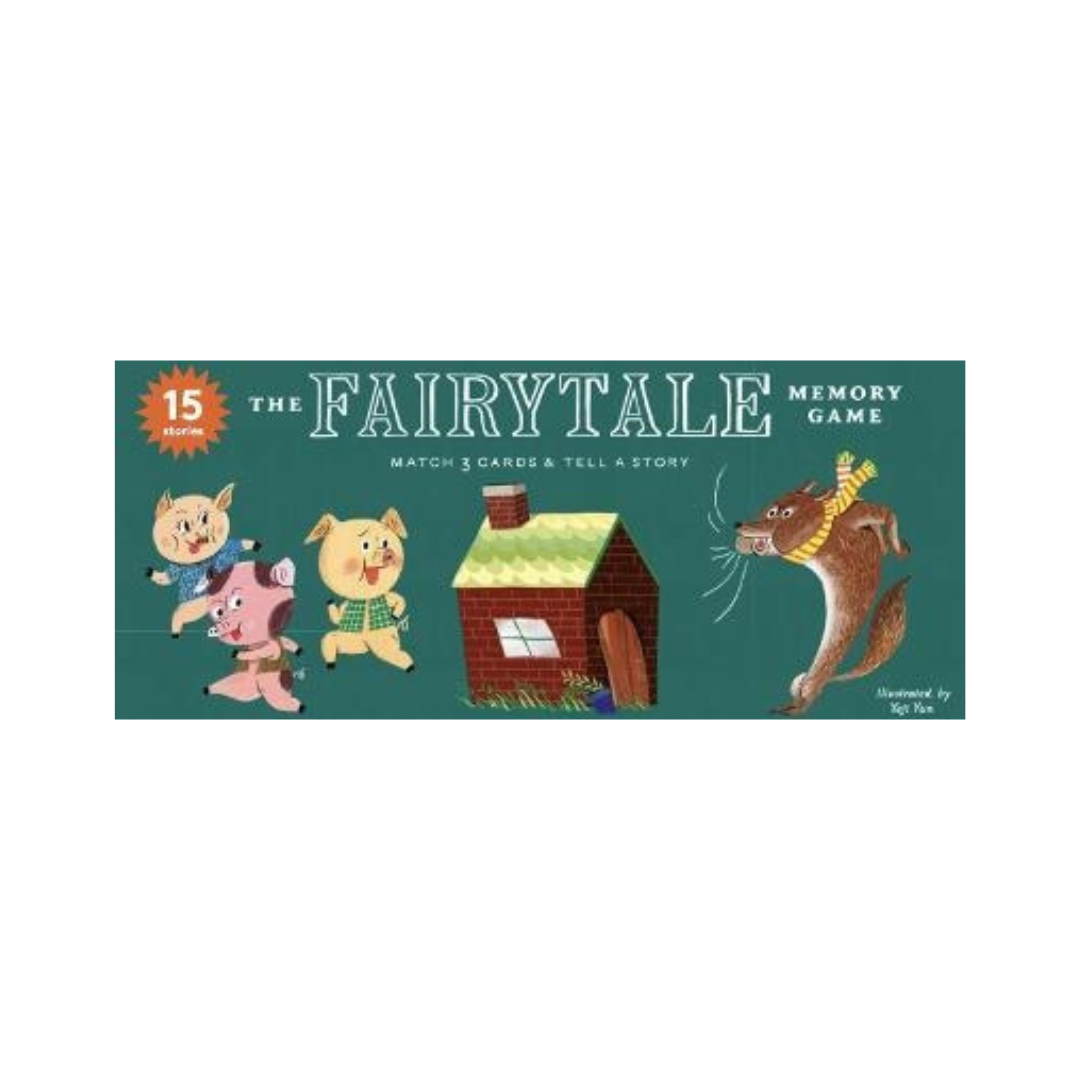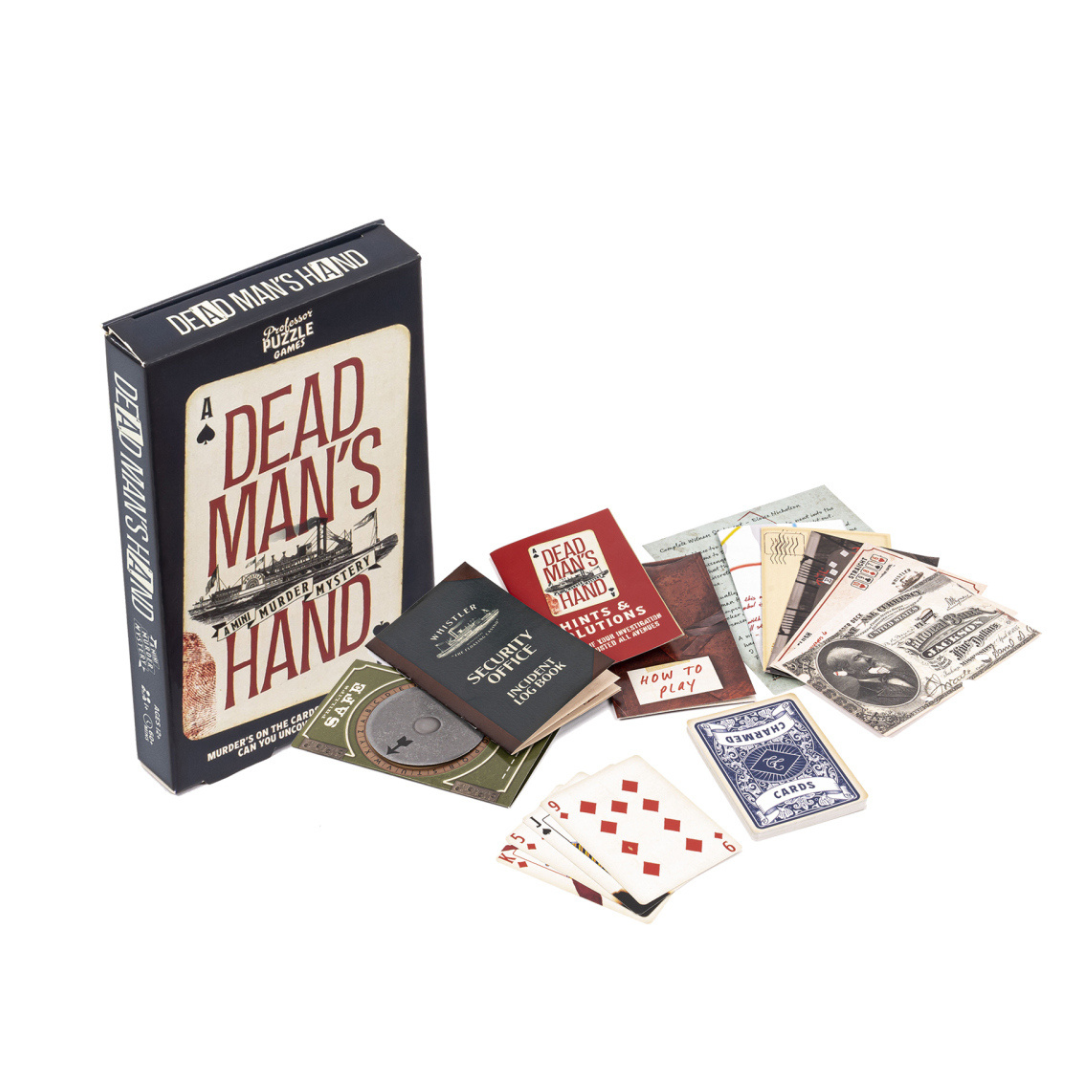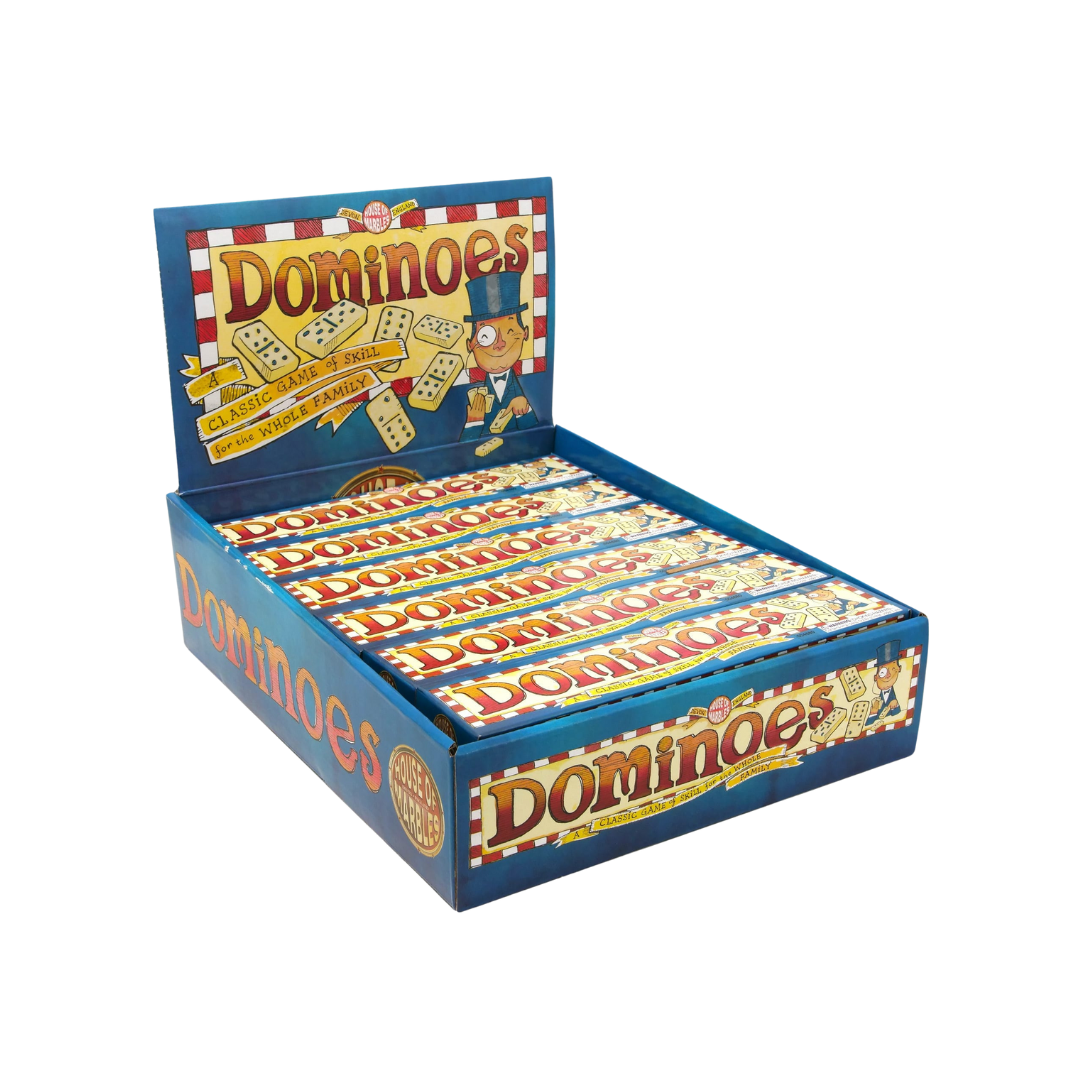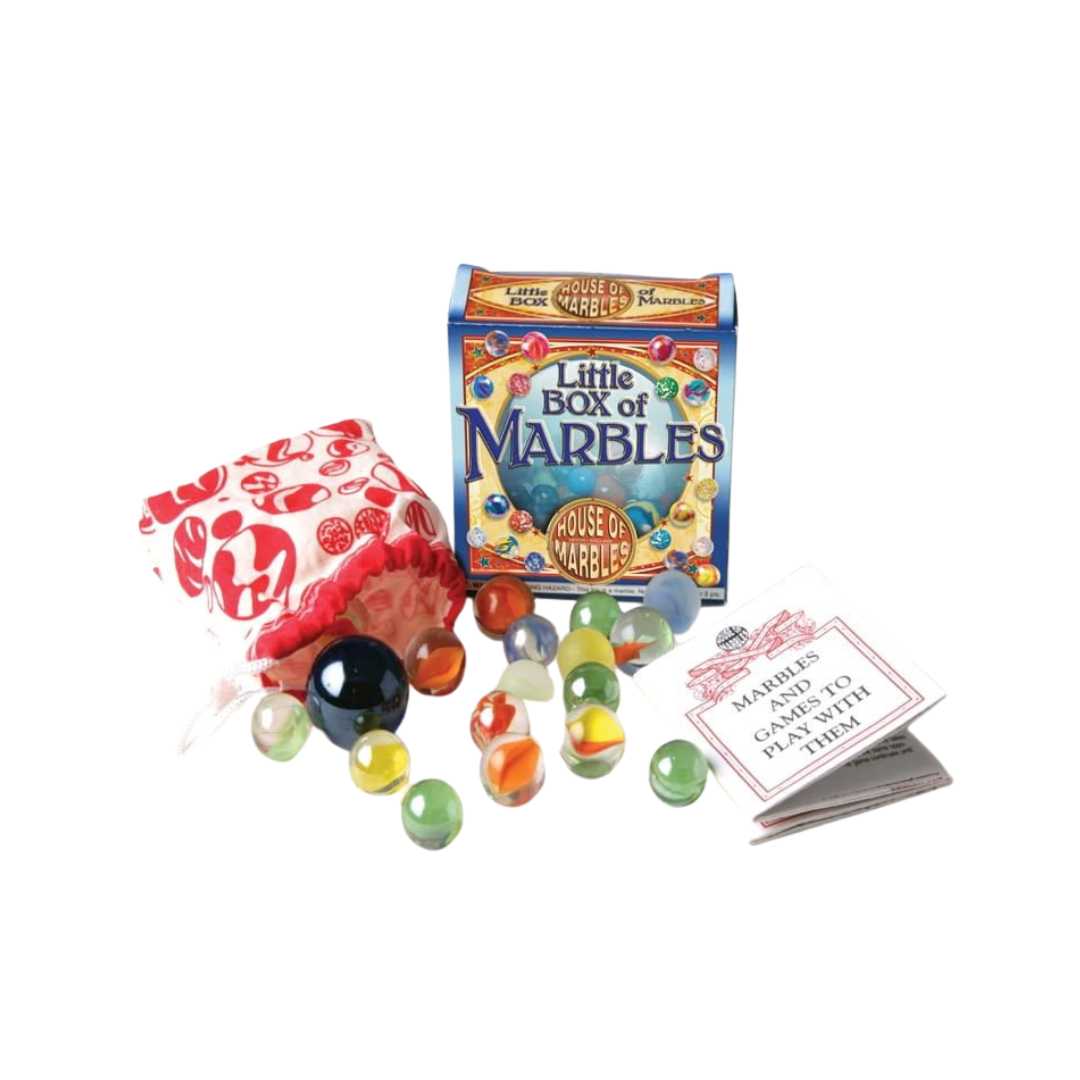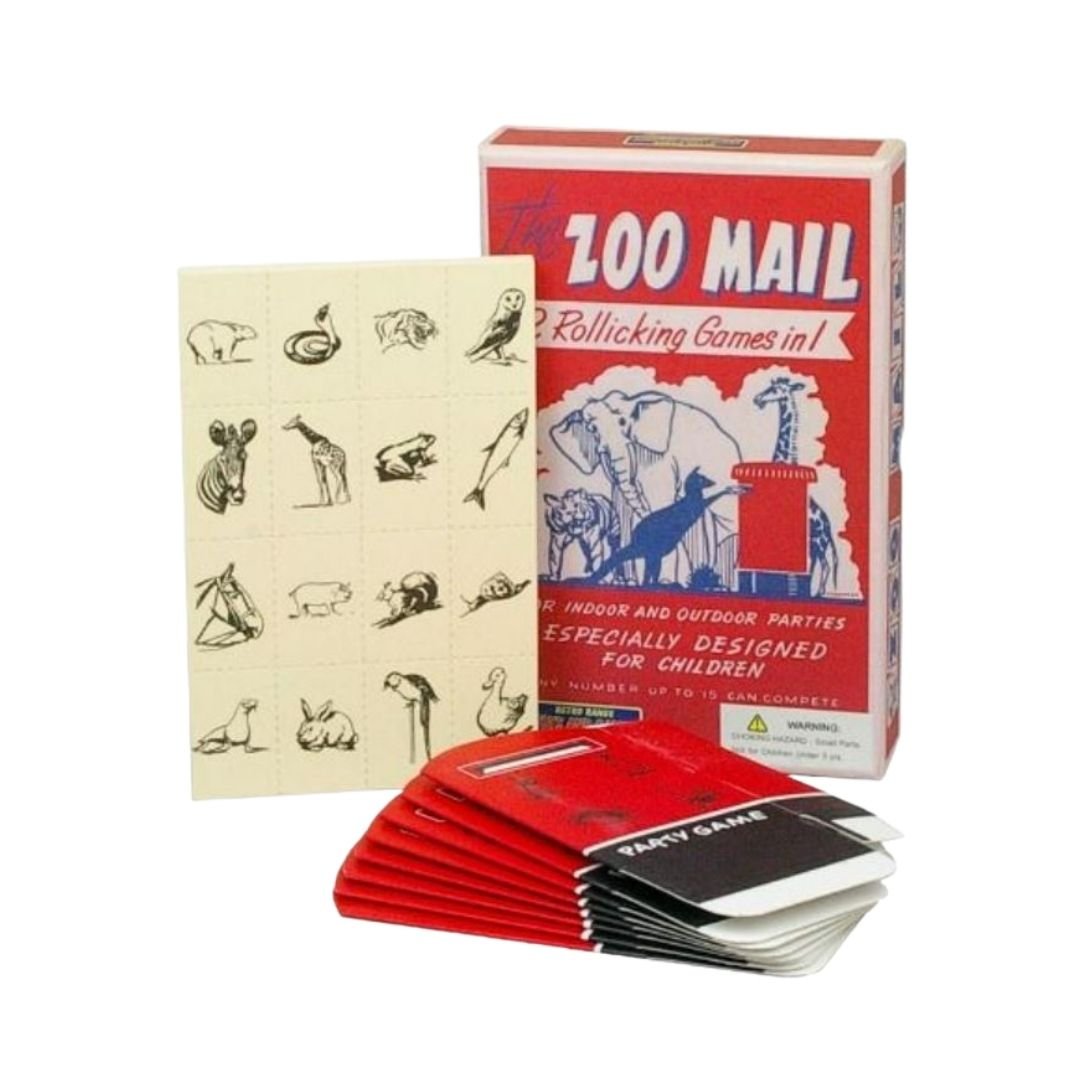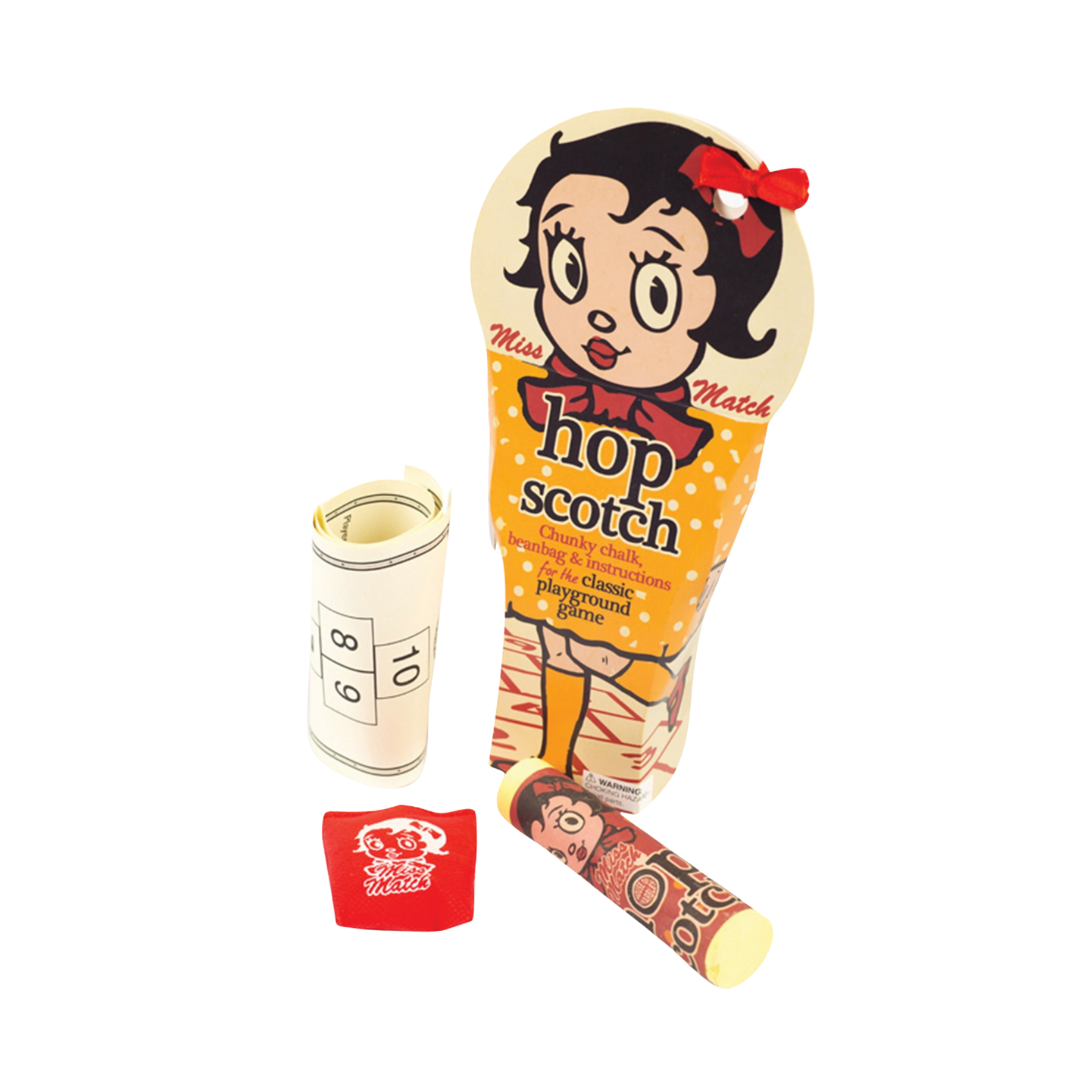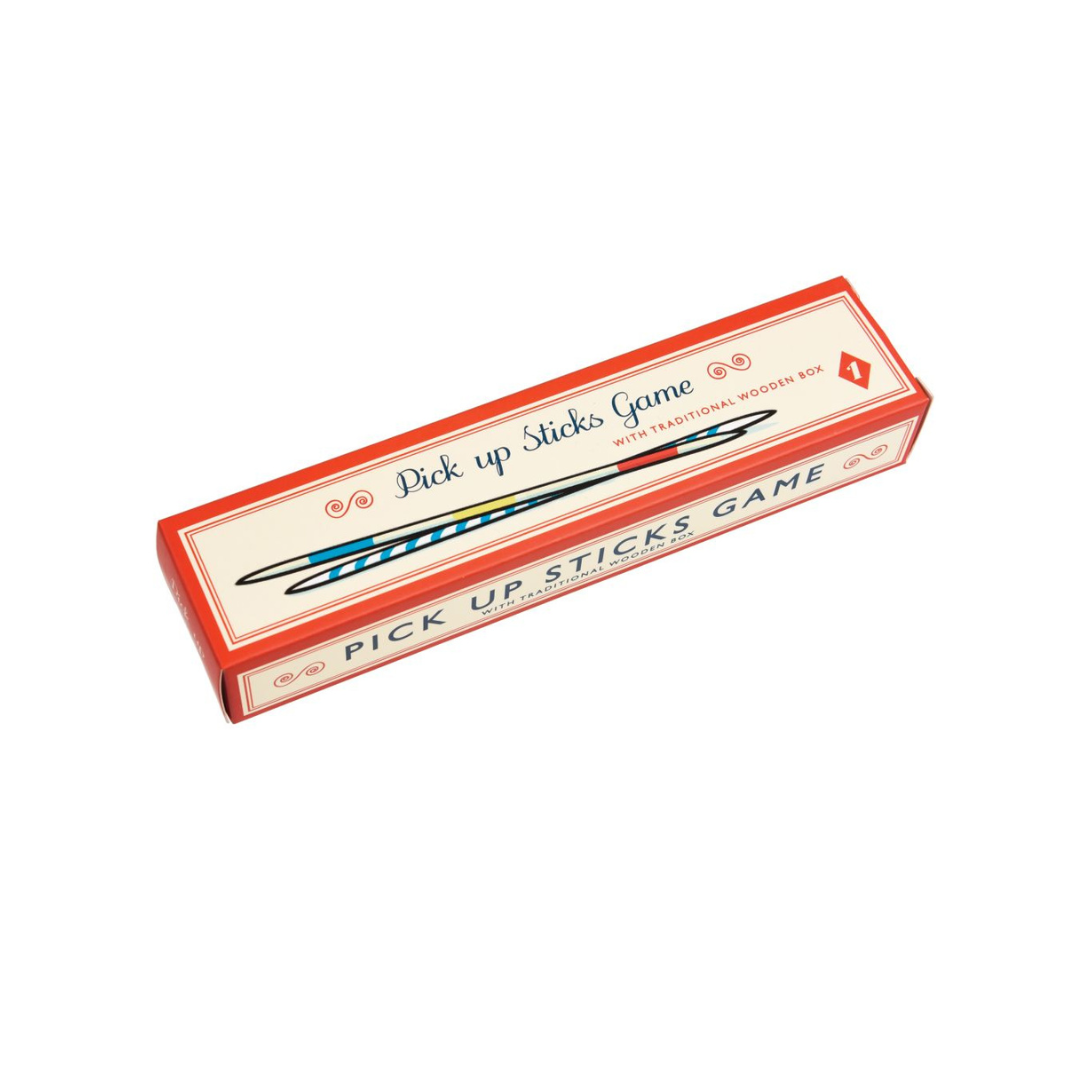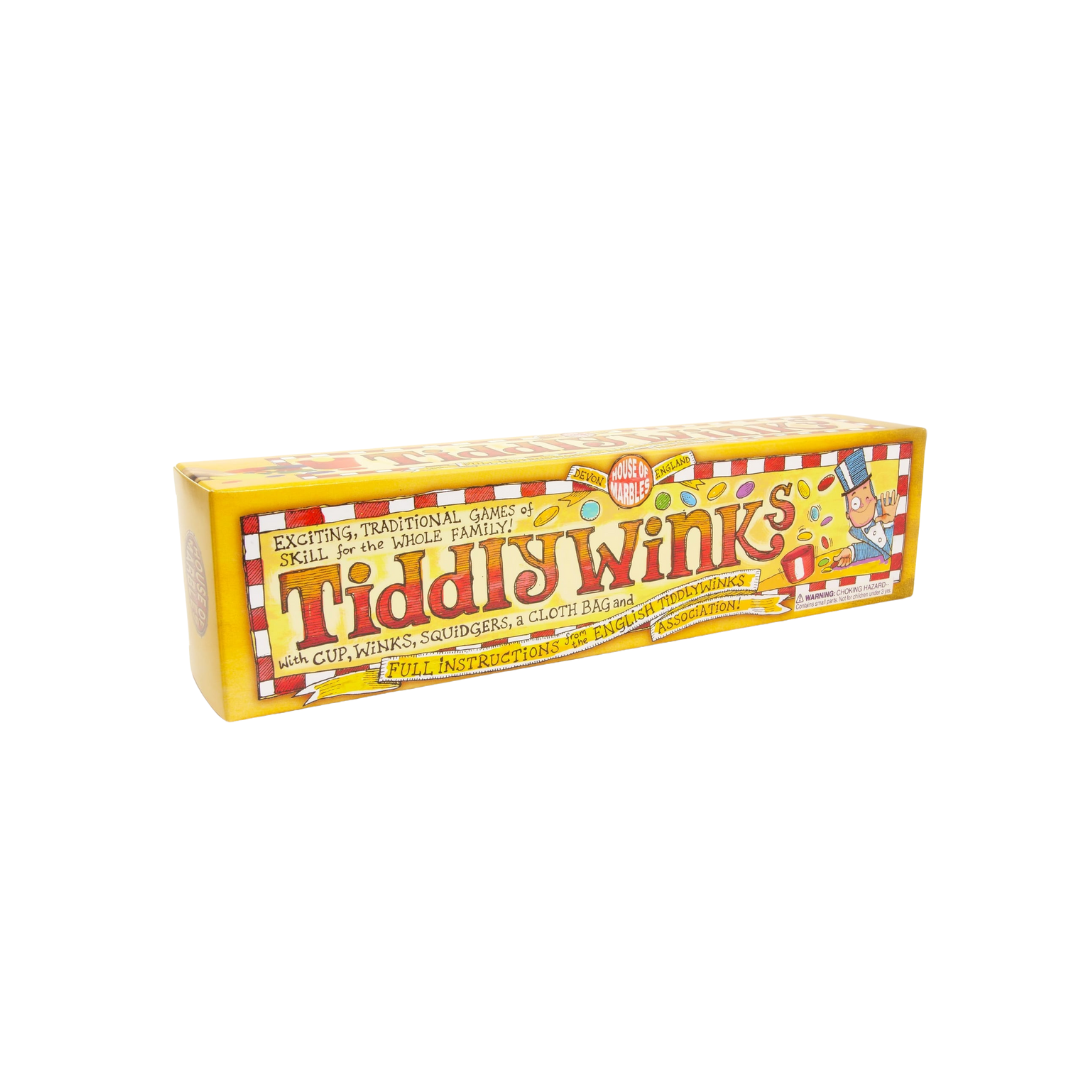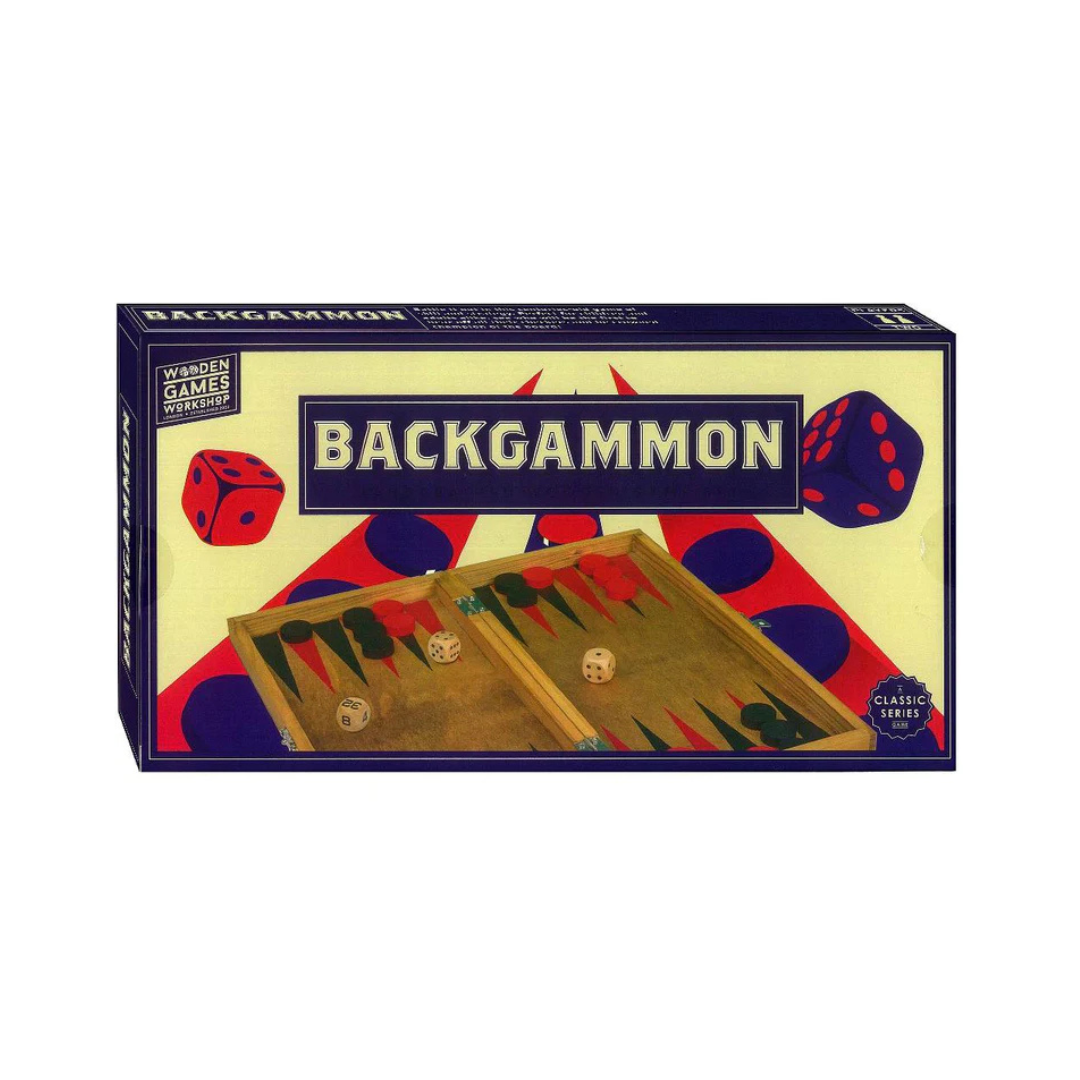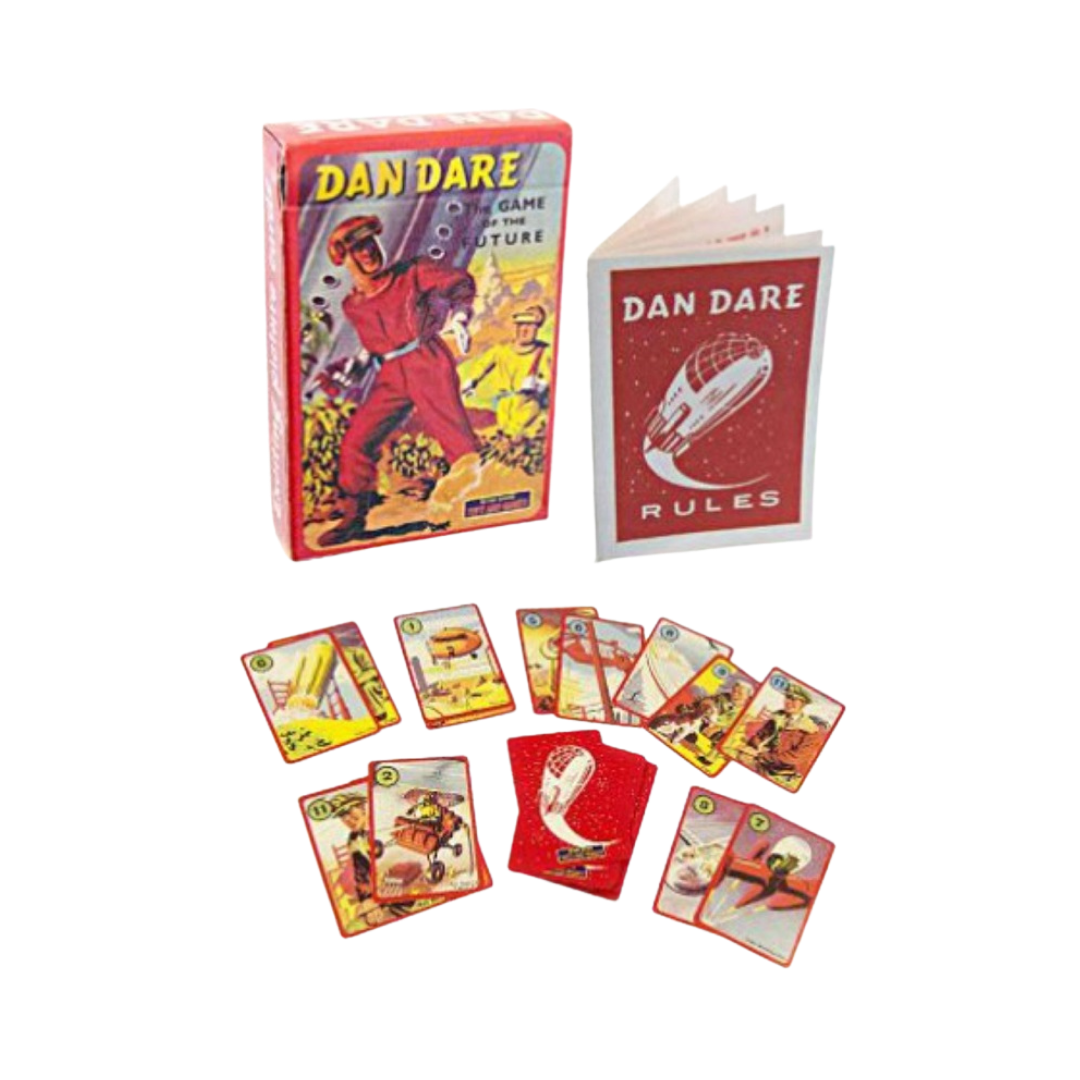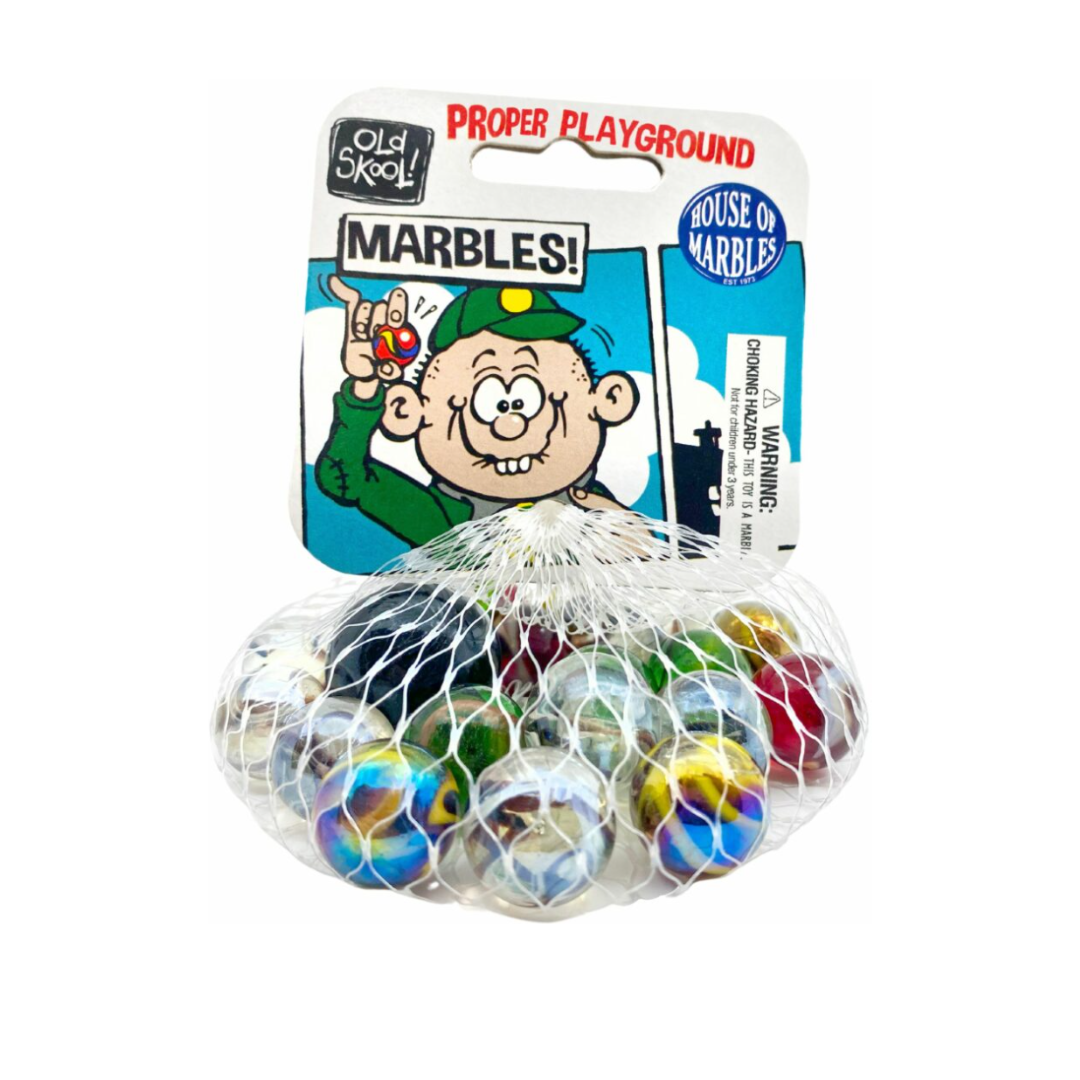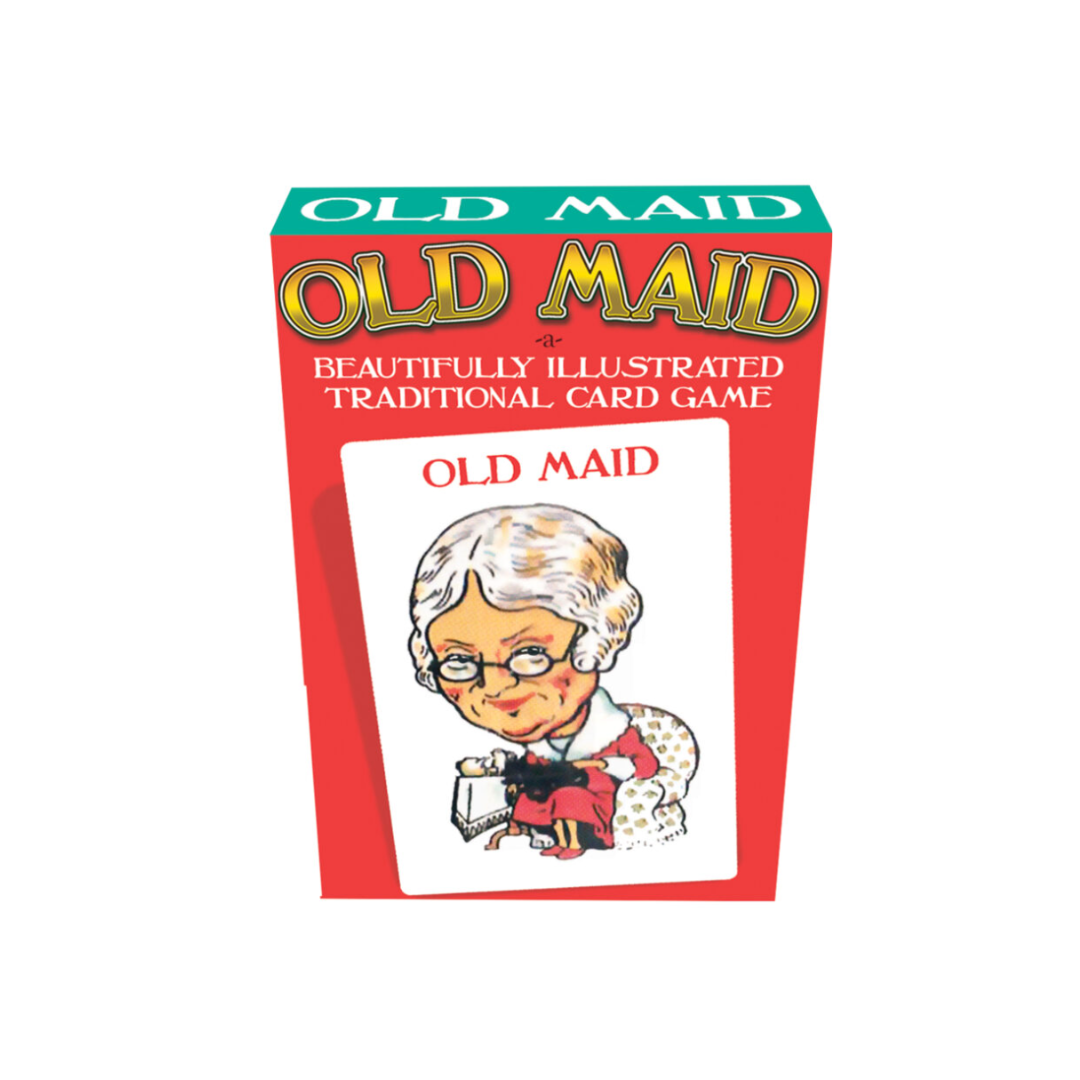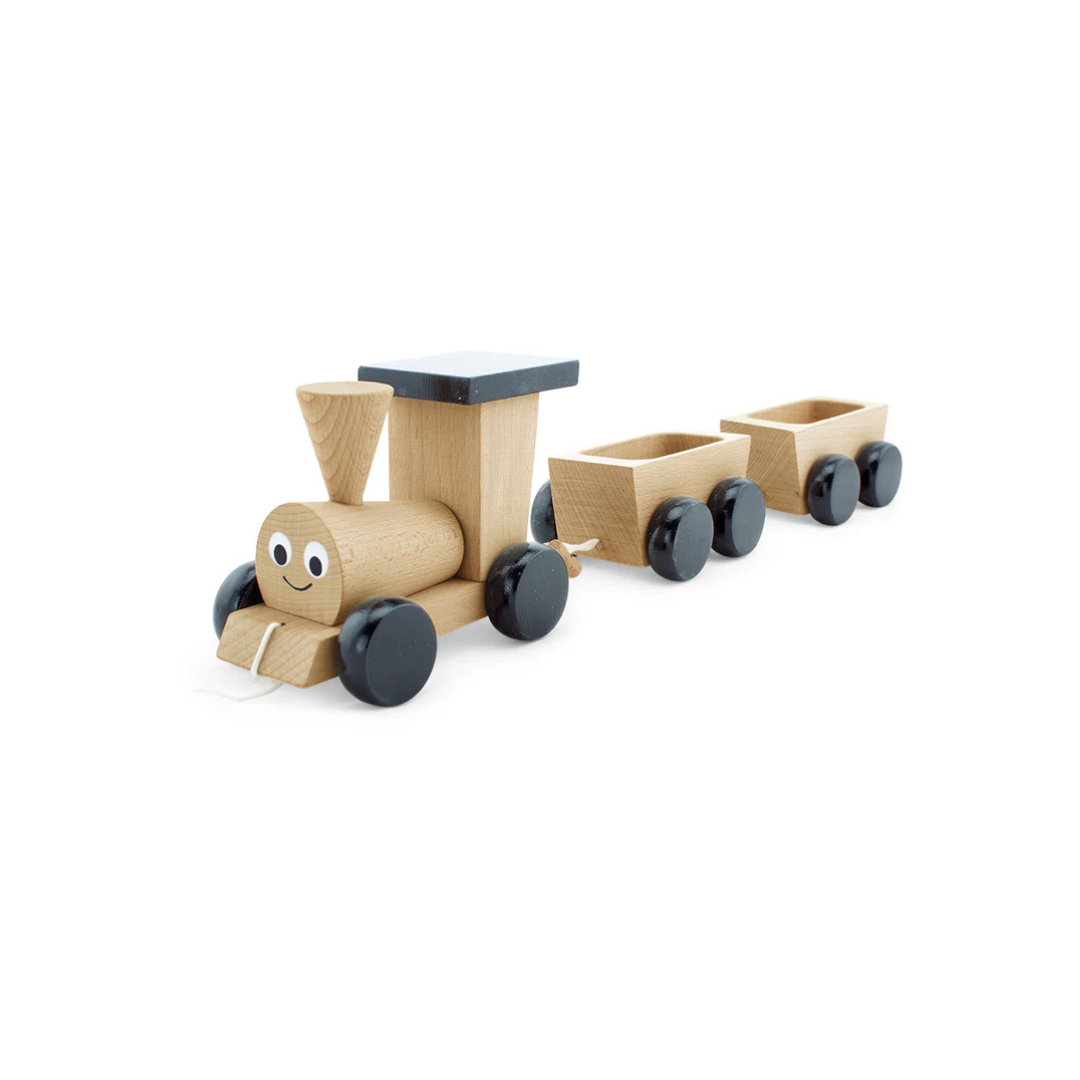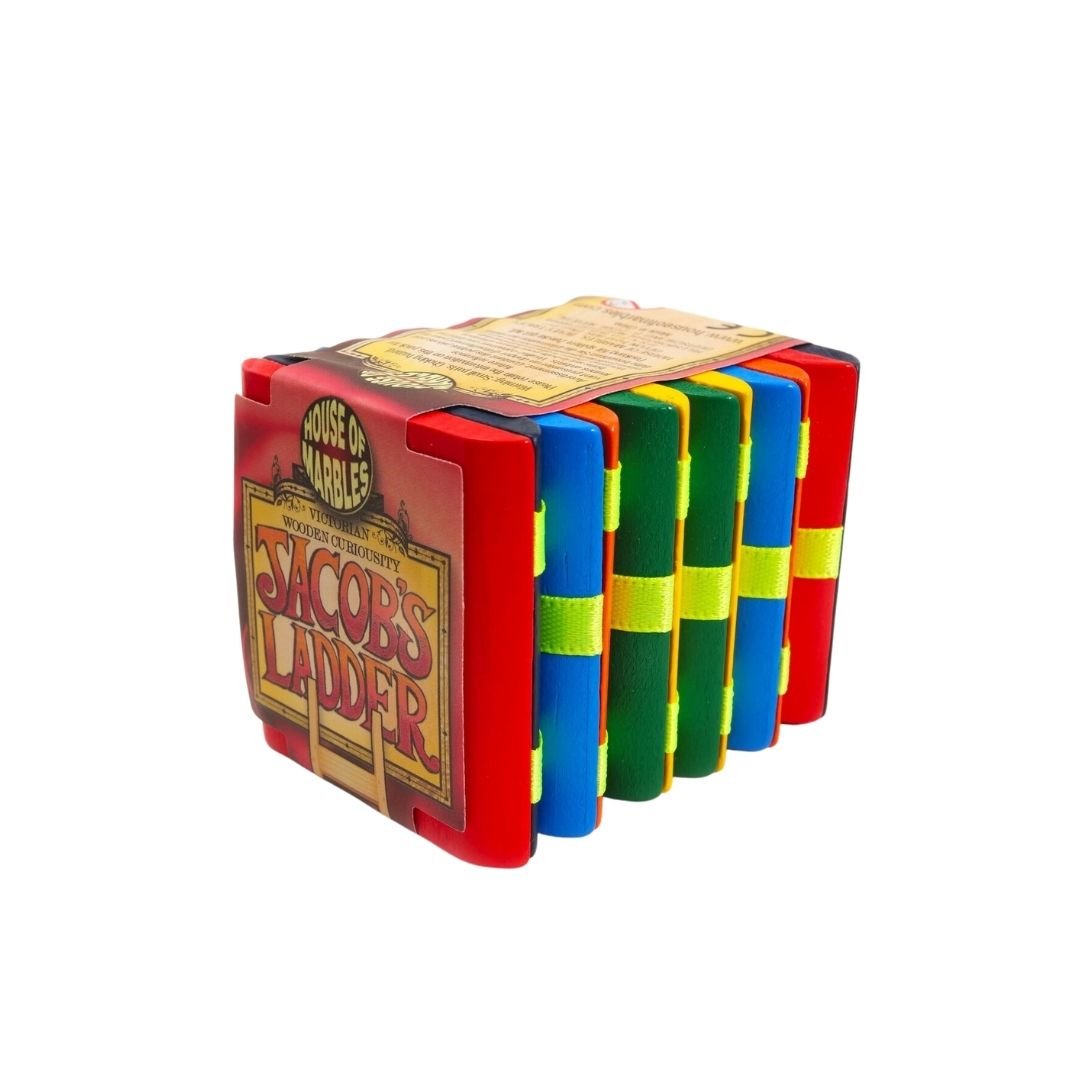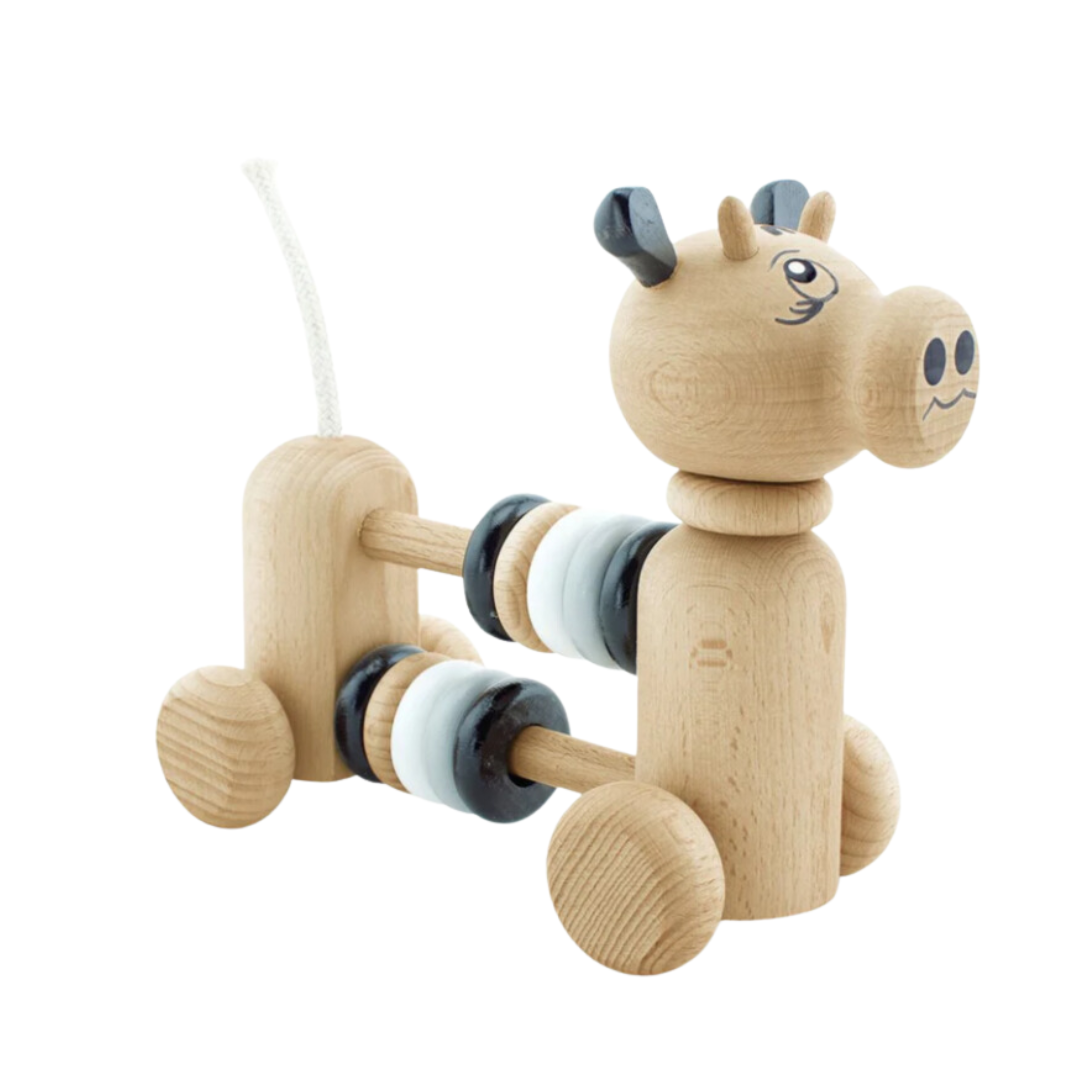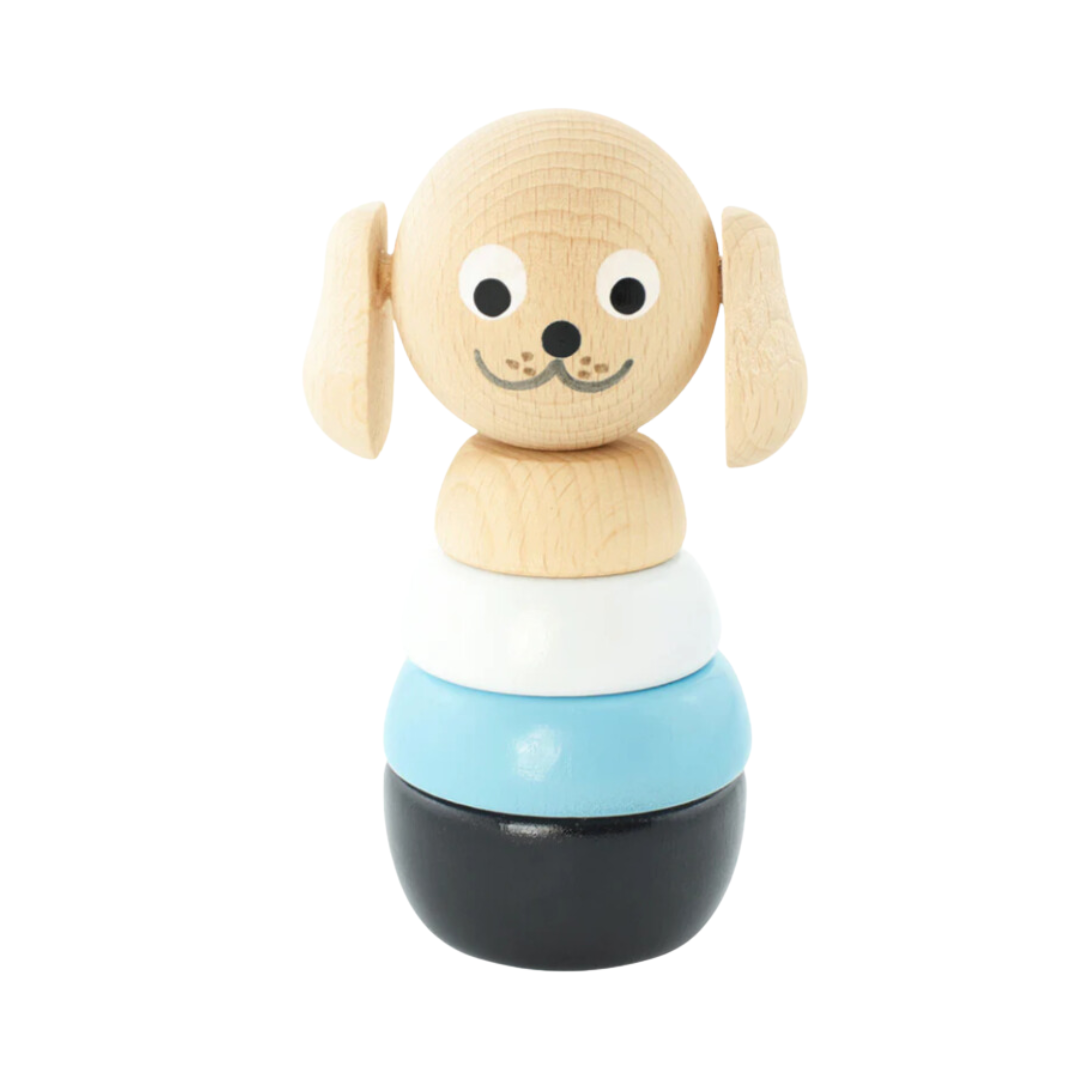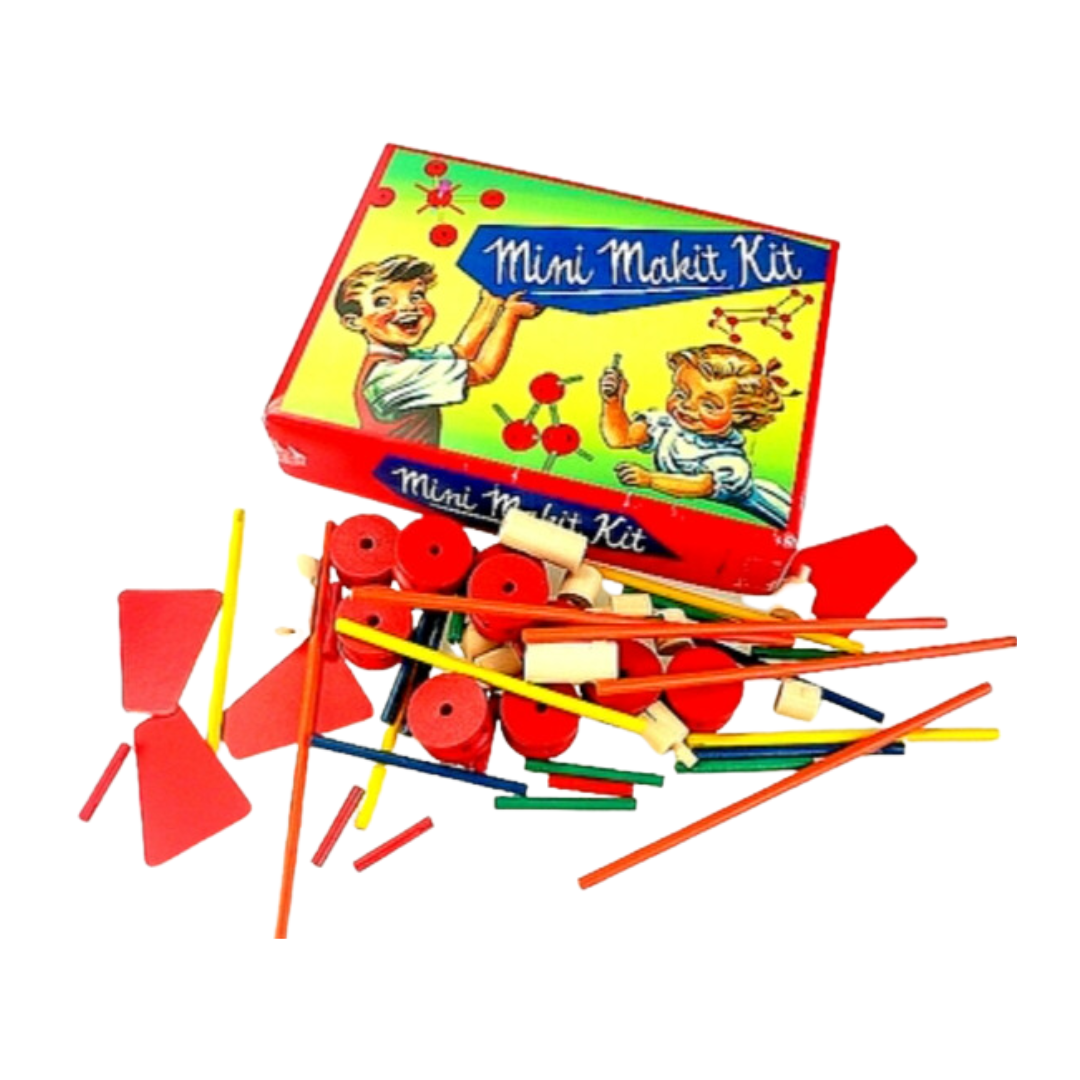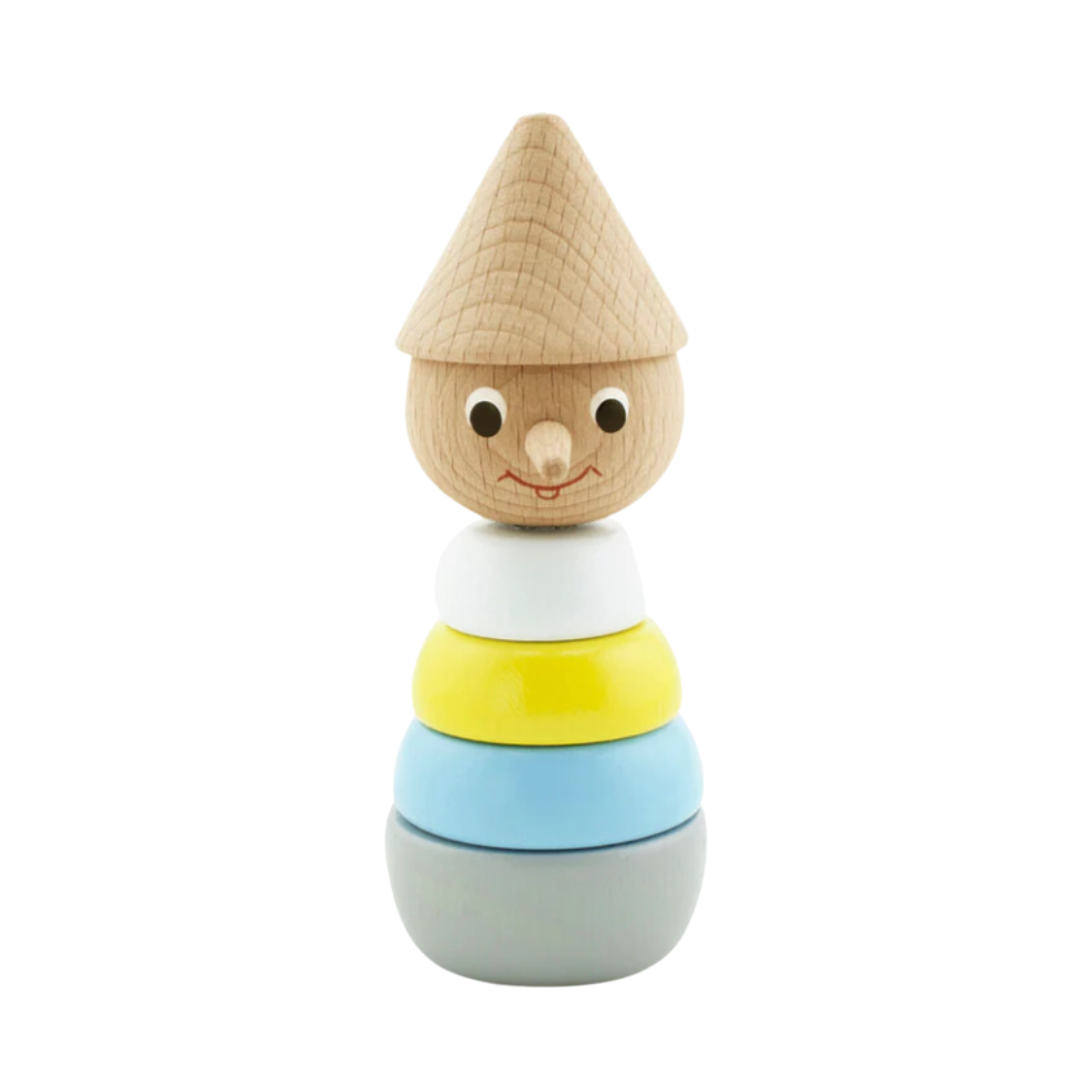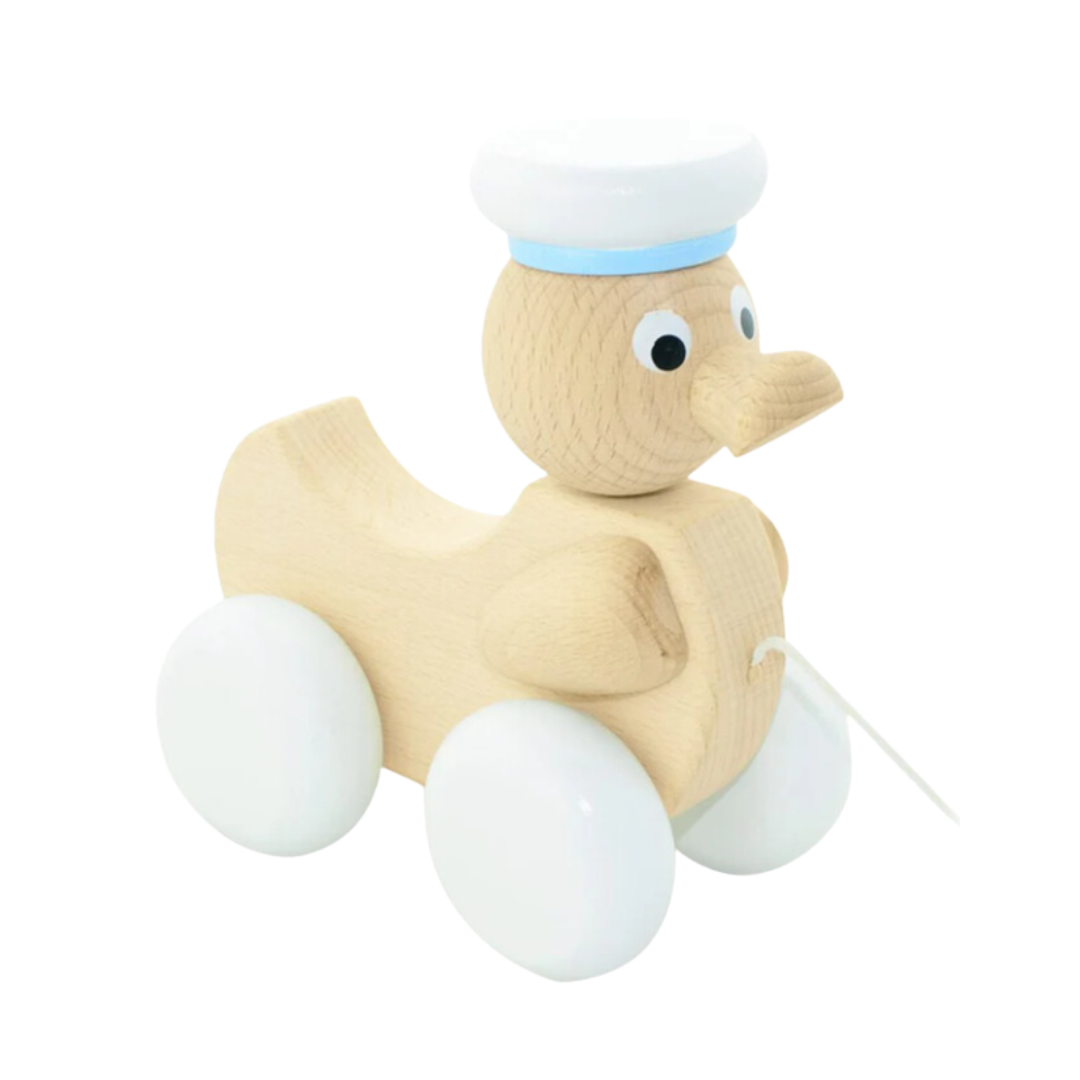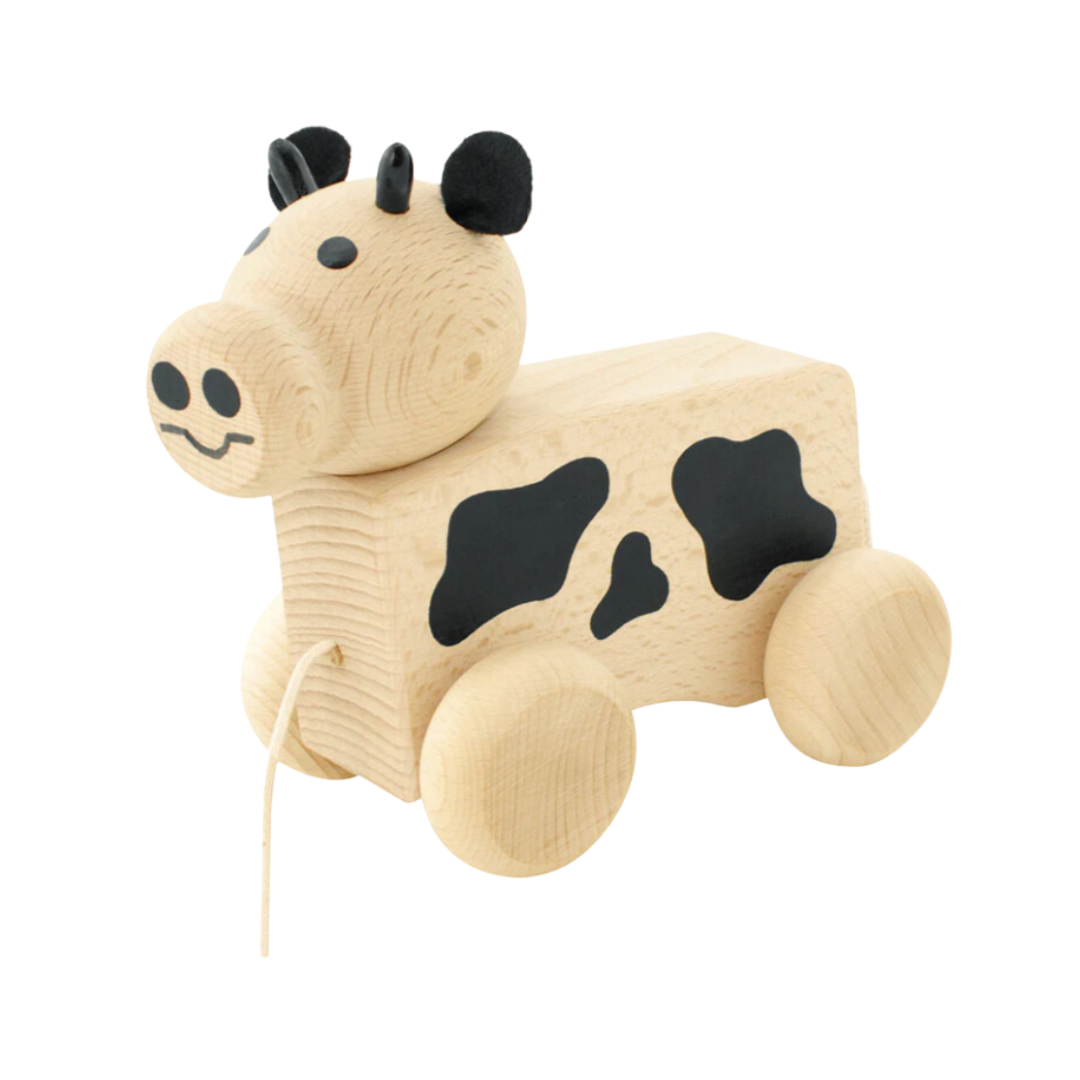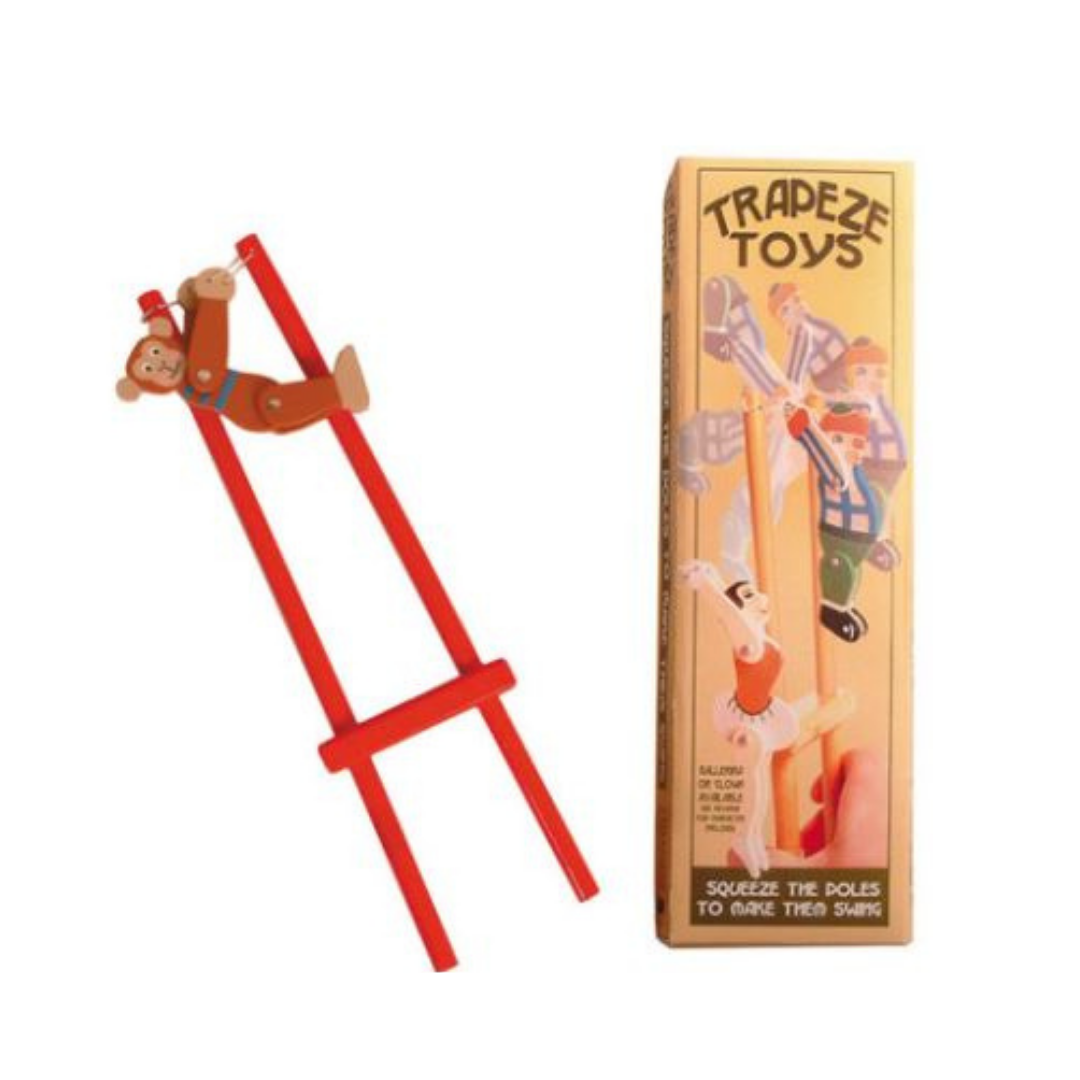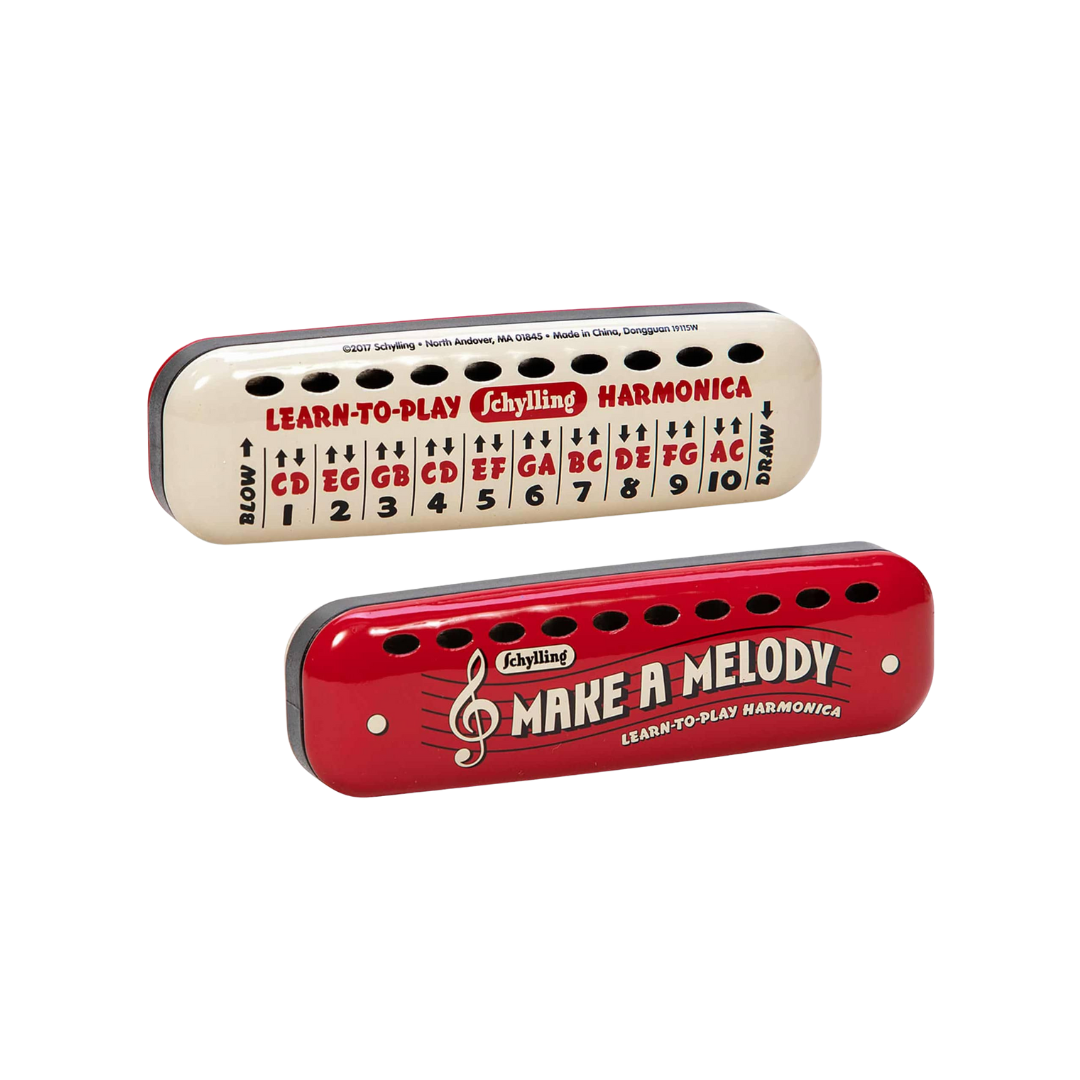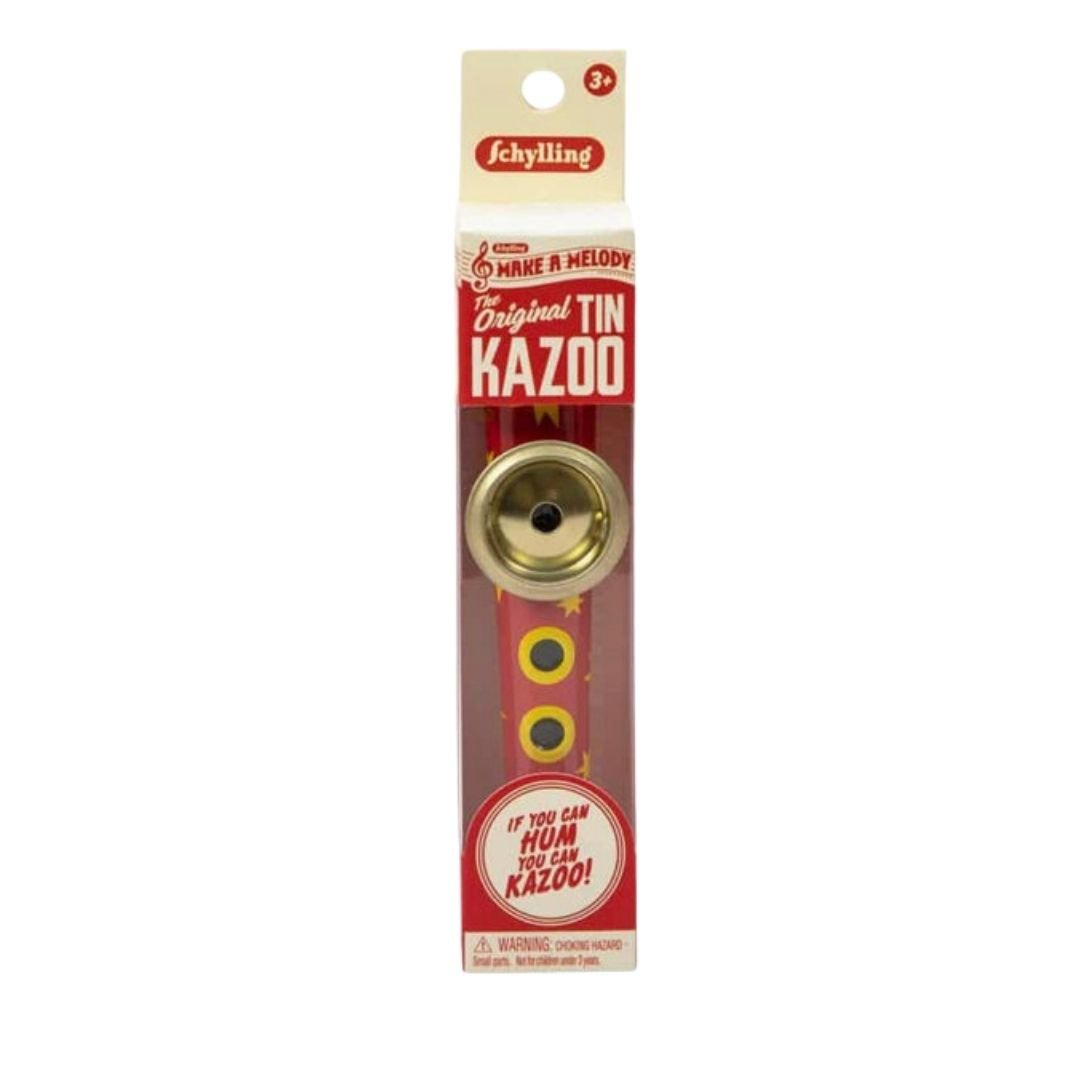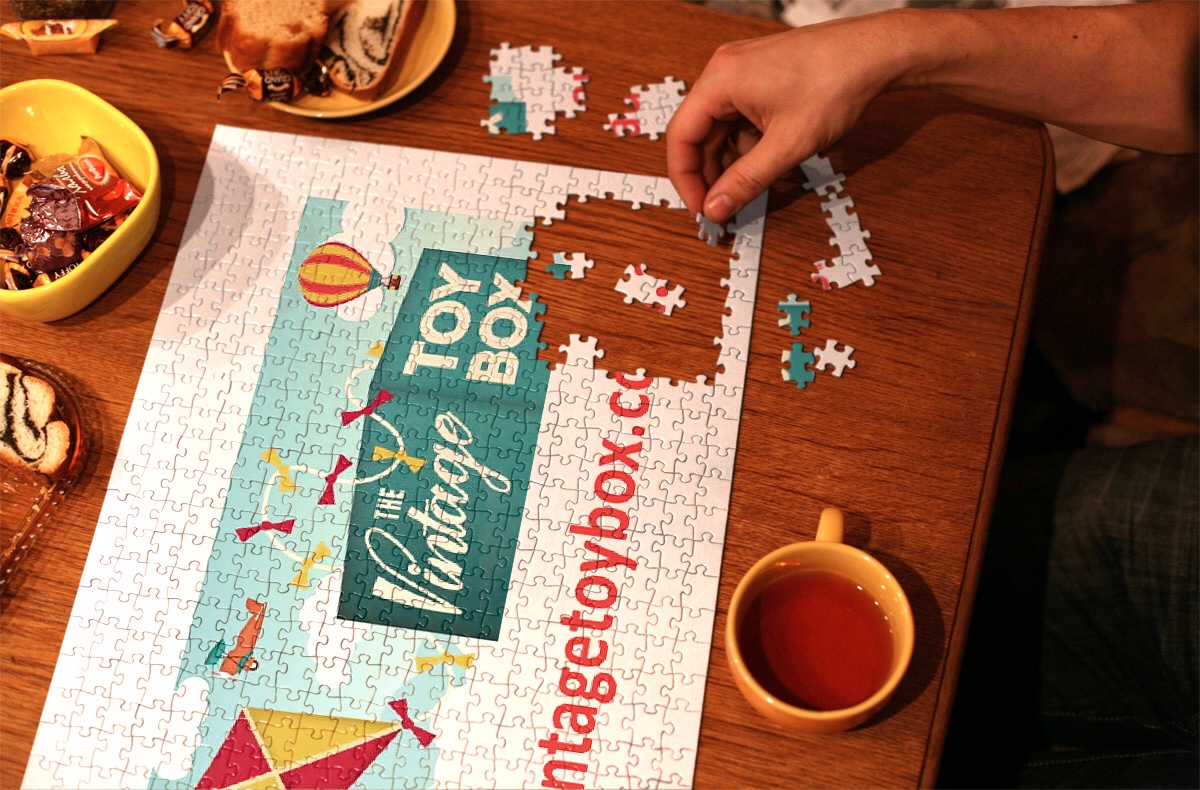Our Favourite Classic Children's Toys
We love all of our toys; they’re all magical and all bring us so much joy. We’re often asked though to pick our top three faves. After much thought, we realized that our ‘go to’ items are also three of our biggest sellers. These are a few of our favourite things …
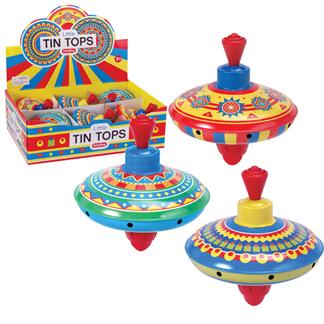
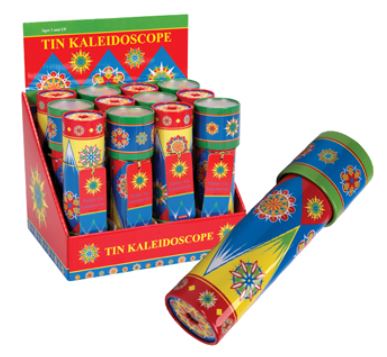
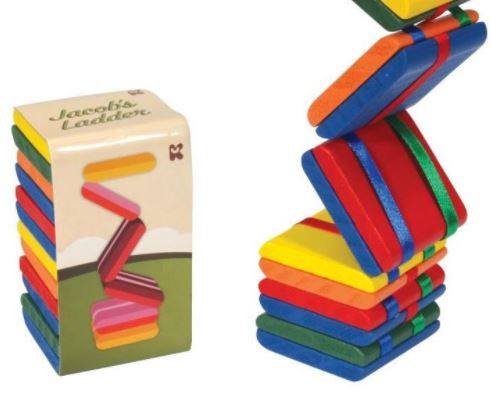
We love all of our toys; they’re all magical and all bring us so much joy. We’re often asked though to pick our top three faves. After much thought, we realized that our ‘go to’ items are also three of our biggest and best sellers. These are a few of our favourite things …
The Spinning Top
The simplest toys are always the best! We can’t help but love our traditional tin spinning tops from Schylling. These wonderful humming tin spinning tops are the perfect size for little hands. Each one features beautifully illustrated carousel graphics and entrances on each spin.
Did you know that the earliest clay spinning top was discovered in 3500 BC - that’s almost six thousand years ago!
A wooden spinning top which was carved circa 1300 BC and was later discovered in King Tut’s tomb was another early example of this simple toy, although Indigenous peoples from around the world have been making spinning tops from fruits, nuts and seeds for thousands of years before this one was created.
Did you know that spinning tops stay upright from an angular momentum; a law that Newton expressed as ‘objects in motion, stay in motion’.
The Jacob’s Ladder
Our Jacob’s Ladder is a traditional wood and lace click-clack toy and is a timeless classic, and a perfect edition to any toy collection. The Jacob’s Ladder is the original fidget spinner, perfect for busy hands.
The true origin of this classic toy, which produces visual and kinetic illusion is a mystery, however many believe that the toy finds its origins in China. We do know however that it received its earliest toy review in a 1889 American scientific article, describing the magic behind the mechanics.
In the 1700’s a Japanese polymath constructed one which was called Gennai’s Wondrous Click-clack; a name that is still around today. Another popular variation of this classic toy was an American 1940’s version, which had an indentation for a penny to disappear & re-appear.
Wherever it came from, the Jacob’s ladder is here to stay!
The Kaleidoscope
Amaze the eyes with brilliant colours and patterns with the classic Schylling design. These beautifully illustrated tin kaleidoscopes continue to dazzle all who lay their eyes on them, and little hands always make a beeline for them in store.
The kaleidoscope is thought to have been invented in 1816 by Scottish inventor Sir David Brewster, with its name originating from the Greek words meaning ‘beautiful form watcher’.
Did you know that Sir David Brewster went on to advance lighthouse lens and stereoscope designs.
The visual stimulus provided by the kaleidoscope therapeutically promotes positive joyful emotions and promotes good mental health through colour therapy. We always new that traditional toys were good for you!
Classic Toys | Return of the Retro Robot
Kids in the 1950s and 60s didn’t have computers or smartphones and tablets. The only way they could get in touch with electronic tech is by watching TV shows, talking about space travel or by playing with the coolest new release toys. One of the most desired toys of this era was the toy robot.
Kids in the 1950s and 60s didn’t have computers or smartphones and tablets. The only way they could get in touch with electronic tech is by watching TV shows, talking about space travel or by playing with the coolest new release toys. One of the most desired toys of this era was the toy robot.
https://www.facebook.com/TheVintageToyBox/videos/287718362049044/
Of course, we are not talking about our modern day sci-fi robots, complete with artificial intelligence, but simple, tin-litho robots with simple wind-up mechanisms. The first tin toy robot to be made is believed to be the yellow, box-like Robot Lilliput from Japan. Lilliput was always thought to date from the 1930’s, but it is now believed that he was actually made after the war, around the mid-1940’s.
The next robot to make an appearance, was the late 1940's Atomic Robot Man, also born in Japan. This robot was given out as a promotional item at the New York Sci-fi convention in 1950. The box for Atomic Robot Man showed a scene of the robot marching through a decimated city, complete with an atomic mushroom cloud.
Battery operated robots became the next big craze, with the release of the movies Forbidden Planet, introducing Robert the Robot in 1956, The Day the Earth Stood Still in 1952, and finally by the launch of Sputnik in 1957. Robert the Robot ended up becoming the most re-produced robot ever, now coming in multiple variations including Planet Robot, Robby The Robot or the simpler named Mechanized Robot.
It turns out that these retro toy robots are still one of the most highly desired toys by kids. In the last few years, we have witnessed the increased interest in almost everything retro from clockwork wind-up robots to retro toy cars. Everyone just loves vintage and retro everything!
With a retro robot, children experience many play related benefits. For instance, they are more physically active, using their imagination to set up whole planets for robot destruction and decimation. Kids can now go a step further, by reenacting their own robot show, for example with Clockwork Soldier’s Robot Puppets. With this amazing craft pack, children can create their own robots; stimulating their creativity too.
When we say retro robots, we just don't mean the robots themselves, we mean every toy that is inspired by this science fiction theme. For instance, the Robot Jigsaw Puzzle is a robot-themed puzzle. This is one of those classic toys that are here to support children’s cognitive development. By finding different pieces of the puzzle, children can create a beautiful image that depicts one of the most well-known robot toys. The toy contains just 24 pieces which means that even small children can finish it in a relatively short period of time. Of course, this doesn’t mean that the puzzle is not challenging. On the contrary, there are some parts where placing the right pieces can be very tricky indeed!
Space Robots is a retro toy that contains three tin robots, which as the name suggests come from a different planet. Or maybe they were sent to space? In any case, this is one of those toys that promises many hours of fun and entertainment. The robots spin and roll, changing directions whenever they hit an obstacle.
If you are interested in a classic robot toy, you can’t go wrong with High Wheel Robot. This old-school toy features windup walking and it was inspired by the popular toy from the 1960s of the same name.
Origami is a popular paper folding technique that originates from Japan. If you want to introduce this technique to your children early, you should consider our Spacecraft Robot Origami. This set comes with five nicely illustrated cards and an instruction booklet. With the help of these cards, your kid (with or without your help) can create a unique spacecraft and imagine how space exploration would look like.
Finally, if you want to revive the times that most people have forgotten, then you can check out our Robot Hands Temporary Tattoos, which turn the hands of your children into fun robots. This set comes with 8 unique robot tattoos that are easy to put on and remove and will guarantee hours of imaginative fun and storytelling!
Retro robots are guaranteed to be loved by generations to come, in whichever form they take - a timeless classic and fun for everyone!
Cool toys from back in the day!
Here at the Vintage Toy Box, we think that one of the coolest things about our toys is the fact that as well as being fun and taking you back to your childhood, you can also share them with your own kids and grandkids and let them see how cool the toys were back in the day! Do you look back fondly at the times you spent playing with great toys as a child? If so, you will certainly be inspired to find similarly terrific toys and games for your own kids or grandkids.
Here at the Vintage Toy Box, we think that one of the coolest things about our toys is the fact that as well as being fun and taking you back to your childhood, you can also share them with your own kids and grandkids and let them see how cool the toys were back in the day! Do you look back fondly at the times you spent playing with great toys as a child? If so, you will certainly be inspired to find similarly terrific toys and games for your own kids or grandkids.
Well just for fun, today we are looking at some of the fun toys we offer which would be awesome to introduce to a kid of today.
The first toy we want to talk about is the awesome Slip N Slide Water Slide Toy. Such a simple concept that provides hours and hours of fun on a hot summers day. Our version is based on the variety from the 60’s which is really cool. You will get a kick out of telling the kids and grandkids how this was a big deal back in the day. It is a lot of fun to watch the kids run and slide down this and if you are feeling brave enough, you can have a go yourself!
Next up we have something that is secretly super cool, cheap and will prove to be highly entertaining. The Magic Drawing Slate is the perfect example of an old school vintage style toy, which at first glance many kids will turn their noses up at. Let’s face it, compared to the iPhone; it is a hard sell. But our Magic Drawing Slate has a ton of retro charm and looks like it was transported right out of the 1960’s. All kids are hooked after they do their first drawing. It’s a magical travelling toy that just keeps on giving.
How can you not love the graphics on the box for this retro inspired Tiddly Winks? Now here is a game that even the grumpiest techno addicted kid will have an awesome time with. While the whole style is clearly inspired by games of the 60’s, Tiddly Winks is such a fun, competitive and skill based game that after a couple of turns any kid will be hooked. Not bad for a game that is over 200 years old.
That is just a small sample of the great toys and games we have here at The Vintage Toy Box. Just about everyone can remember their favourite toys growing up. If you wish to pass that type of joy onto other children in your life, shopping with us will certainly help you on that journey. If you are looking for a toy or game that is not just going to be fun to play, but also lets you share something from your past with your kids, grandchildren, nieces and nephews, then you really can’t go wrong with something from The Vintage Toy Box.
The Ever-Lasting Appeal of Retro Toys
We are living in a world where electronics and technology are present everywhere around us. Our kids are used to playing electronic games, watching TV and using the Internet, iPads and iPhones. Despite this however, kids and parents alike still love retro toys.
We are living in a world where electronics and technology are present everywhere around us. Our kids are used to playing electronic games, watching TV and using the Internet, iPads and iPhones. Despite this however, kids and parents alike still love retro toys.
Parents love these toys because they invigorate some of their best childhood memories, and take them on a warm, fuzzy trip down memory lane. Children love them because of their simplistic design and delightful appeal. If you are still not sure what makes retro toys attractive, keep reading because we will list a few good reasons why your kids should have at least one retro toy in their toy box.
Retro toys come with an ageless charm that has captivated children for generations. They hold a timeless appeal that guarantees that the toys will be loved not only by your kids but also by your grandchildren too and in some cases, their grandkids after that.
Retro toys are more durable compared to most modern toys. They are usually made from high-quality wood or tin, unlike modern toys that are made of cheap plastic that ends up being thrown away after a few uses. When kids are using these hardy toys, you can be rest assured that they will last for a long time no matter how heavy their use is. In fact, they are designed with durability in mind. Many modern toy makers, such as Artiwood, Djeco and Londji now also make their toys, games and puzzles with this durability in mind, producing beautiful toys, built to last, and designed to be handed down to the next generation.
In the past, toy manufacturers have paid special attention to the packaging, knowing that the outer appearance of toys is incredibly important to buyers and to children. Packaging lures children and buyers in, and catches the eye. Nothing beats a colourful, retro present in a bright, big box. Imagine watching a child’s face light up when they receive a gift with such beautiful packaging. The colorful packaging will bring a huge smile to little faces everywhere.
As mentioned previously, today’s children often spend countless hours playing video games or watching TV. Retro toys support the mastering of certain old-fashioned skills that cannot be learned by watching a screen. For example, there are toys that can help kids to learn to build, learn to sew, learn to cook. Etch-a-sketch toys are good for developing drawing skills. There are gardening toys, toys for creating shelters, toys for using the imagination, putting on a show, and most importantly, toys for developing people skills.
The creative play that retro toys encourage stimulates the imagination, way beyond screen time. By playing with retro toys children can unleash their creativity, something that modern toys don’t allow for in the same way. Creative skills are incredibly important. Buying a few retro toys to add to their toy collection is one of the simplest and most convenient ways to do encourage creativity and imaginative play.
Classic Toys | Tin Toys - A Step Back Through Time
Some of the most collectible toys in the world are old tin toys. Tin toys are made out of tinplate and often motorised and colourfully painted to resemble characters or vehicles, such as toy trains, cars, and other motorised vehicles.
Some of the most collectible toys in the world are old tin toys. Tin toys are made out of tinplate and often motorised and colourfully painted to resemble characters or vehicles, such as toy trains, cars, and other motorised vehicles.
Many of the early tinplate toy makers were based in Germany with companies such as Bing & Schoenner and Issmayer being leaders in their industry in the 1860s through to the early 1900s.
Germany remained the major producer of tin toys into the early 20th century. The most famous manufacturer being Ernst Paul Lehmann, who produced such wonderful tin toys in Brandenberg, Germany from the 1880s to the 1930s. Lehmann today has a worldwide following of avid Lehmann tin toy collectors who often collaborate to track down rare toys from his vast collection.
France and England soon jumped onto the production of these popular toys, leading to a surge in what would become known as the “Penny Toy”, with thousands of tin toys flooding the market.
Production of tin toys in the United States only boomed much later, and it wasn’t until after World War I, when consumers were less enthusiastic about buying German products that the US found its way. Production soon however overtook that of their European counterparts, with cheap & plentiful resources contributing towards more favourable manufacturing costs.
Louis Marx & Company was the largest American tin toy manufacturer during this era, operating from 1919 to 1978. Marx produced a huge number of tin toy designs, producing enormous amounts to keep prices down. The company produced so many designs that the toys themselves were often imprinted with the slogan, "One of the many Marx toys, have you all of them?". Toys included tinplate buildings, tin toys, tin soldiers, play sets, toy dinosaurs, mechanical toys, toy guns, action figures, dolls, doll houses, toy cars and trucks, and trains.
Due to the re-allocation of resources, the production of tin toys ceased during World War II, and many toy manufacturing factories were taken over for arms and munitions manufacture. Many shut down permanently and never went back into business after the war. Japan began producing enormous number of tin toys, and due to reduced competition in Europe soon became the world leader in tin toy manufacturing.
TOYS & GAMES DURING WORLD WAR II
A toy's appeal lies in the form and shape, the beauty of line, the colour and detail, the charm of miniaturization, and the humour of caricature.
Toys and games have always reflected the attitudes, humour, and imagination of the culture and times that created them.
As toy historians Athelstan and Kathleen Spilhaus wrote, "A toy's appeal lies in the form and shape, the beauty of line, the colour and detail, the charm of miniaturization, and the humour of caricature. Some toys amuse us with their jerky antics; others add beauty to our lives with their grace and rhythm. Many do things we can't do in real life, thereby keeping us in touch with fantasy."
During WW2, children played many different games, both in groups and individually. Children commonly played Hopscotch, Four Square, Jump Rope, Chess etc. together, as well as all types of ball games. Young children loved to play jacks, marbles, play school and house, and played with cars or dolls. Kids in the neighbourhood loved playing games out on the street such as, "Red, Light, Green, Light", "Red Rover", "Hide and Seek", "Statutes" and many other games.
Board games were popular like Monopoly, Scrabble, Life, Checkers, Chess, Backgammon, Chinese Checkers, and Dominoes. Cards were a really big hit - Fish, Concentration, Crazy Eights, Hearts, and if old enough, Canasta, Gin Rummy, Solitaire, Slap Jack, War and 21. There were also games played in the water such as Marco Polo, dive bomb and water ballet. Children played for hours because they did not have video games or television. More often than not they made up their own games too.
In the evening children played cards, Chutes and Ladders (which is similar to Snakes and Ladders), Candy Land and Checkers. The boys enjoyed playing with army figures and the girls on the other hand liked the brand new Barbie doll. During the war, families were short of money so only the rich children had toys. Other children may have had a football and maybe if lucky, a couple of marbles.
Life wasn't all fun and games though, children still had to go to school, though some schools moved from the towns to the country. As well as ordinary lessons children learned air raid drills, leaving classrooms when the sirens sounded to go to air raid shelters. To raise money for the 'war effort', schools started 'Spitfire Funds' and National Savings Groups. More than 6,000 school savings groups started in 1940. Children saved money each week, instead of spending their pocket money on toys.
Most children left school at 14 (in 1944 the school leaving age was raised to 15). From school, most young people went to work. Only a few went to university. They could join the forces in 16. At 18 most young people knew they would be 'called up' (conscripted) for the Forces or for war work in factories, farms or coal mines. In 1945 German boys as young as 10 and 11 took part in fighting during the last weeks of the war.
At home, children listened to the radio. For many, their favourite programme was the teatime 'Children's Hour'. Children listened to music and comedy shows too, though perhaps not to the 'Radio Doctor' telling people how to stay healthy. People played records on a gramophone. Records in those days were black shiny discs, easily broken. At the cinema ('the pictures') you usually saw two films, or a cartoon and a film. There were Saturday morning film clubs for children.
Many toy factories were now making guns or plane parts or other war equipment, so there was a shortage of new toys. Children swapped old toys at 'toy-exchanges'. Many wartime toys were made of paper or card, because rubber, plastics, wood and metal were needed for the war. Lots of toys had a war theme. There were toy planes, toy tanks and toy battleships to float in the bath, there were books such as the 'ABC of Airplane Spotting', card games with pictures of soldiers and sailors, and a darts game with a picture of Hitler as the bull’s-eye to throw at.
Most children though made their own toys. Many children played with a small motorbike wheel, and a stick, holding races along the streets. They also made their own trolleys with pram wheels which they used to run in the streets, which were fairly safe back then as there was so little traffic. Most of the children used to collect soldiers & cap badges, the German ones were the most popular.
Toy manufacturers had to come up with creative ways to continue production. Paper dolls, puzzles, and games increased in popularity thanks to their widespread availability. Toys, board games, and hobby sets with military and war motifs also became standard playthings. Ingenuity developed out of necessity. For example, Lionel Corporation, famous for its trains, produced military items such as compasses during the war. However, in an effort to stay connected with its toy customers, Lionel created the Wartime Freight Train made entirely out of heavy-duty paper stock. It wasn’t the same as a Lionel electric train, but it was the best the company could offer under these circumstances.
The outbreak of World War II not only stumped the European toy industry, but also that in America. US metal was rationed and toys were placed on a list of unnecessary goods. A number of manufacturers including Daisy Outdoor Products and the Smethport Specialty Company were suddenly prohibited from making play items from their factories. Many toy companies were forced out of business. Others were retooled and enlisted by the government. Buddy “L” Hubley, Strombecker and the Louis Marx Company were among many large American companies that went from making children’s products to military supplies during the 1940s, and many, sadly, never found their way back.
Traditional and Classic Wooden Toys
Even though we live in a digital age full of electronic toys, there is still a big place for traditional toys in our kid’s lives. It is after all the simplest of toys that help develop children's mental and physical abilities.
Our world is ever changing, but one thing that hasn't changed over the centuries is the fact that children love to play.
Even though we live in a digital age full of electronic toys, there is still a big place for traditional toys in our kid’s lives. It is after all the simplest of toys that help develop children's mental and physical abilities.
This is especially true when it comes to traditional wooden toys. These toys may appear inferior when compared to the big, bright electronic toys, but the undeniable fact is, they bring so many educational benefits to children. For instance, traditional wooden toys can unleash the creativity and imagination of children - they have to work harder for a "reward", they need to utilise their own imagination instead of receiving instant gratification in the form of a flashing light, a movement or a sound. This helps their story telling abilities, their motor neurone skills and their social skills.
Wooden toys are highly durable and can be passed down from generation to generation, evoking precious memories. They often become family heirlooms, whereas electronic toys eventually find themselves in landfill.
Wooden toys are generally much safer compared to plastic toys, not just for the child, but also for the environment, as their manufacture does not release harmful toxins and pollutants into the atmosphere. Traditional wooden toys are great for the environment because they are all-natural and recyclable.
You can choose from a wide range of traditional wooden toys. Some of the most popular toys over the decades are highlighted below.
One of the most long standing and simplest wooden toys is a yo-yo. Yo-yos were first used in ancient Greece more than 2500 years ago. They became a real hit in the 1920s in America and are still one of the most used traditional toys. Even though they can be made from different materials, a wooden yo-yo is the best choice you can make. These toys are challenging, fun and relatively cheap - children can buy them with their own pocket money. Users can use yo-yos in a basic manner, but they can also learn a wide range of tricks. Yo- yos are a really popular toy in the playground, with generations of children holding trick competitions with each other.
Another long standing wooden toy is a pop pop gun. This toy gun was first created by Edward Lewis in the late 19th century. The simple wooden gun uses air pressure to pop a projectile that usually comes in the form of foam or cork. This gun is totally harmless, but very entertaining for children. Of course, over the years, people have created many different models, but the wooden one remains the most popular.
Both girls and boys still love playing with wooden boats. Some of these traditional wooden boats have moving parts and are built to represent real boats. They are designed in a way which allows for their use in water. Wooden boats for us conjure up beautiful images of lakeside picnics and parasols from a bygone era.
Of course, wooden boat toys are not the only type of vehicle made from wood and still used as popular toys - we have wooden trucks, wooden trains, wooden cars, wooden planes - the list goes on.
If you are looking for a great educational toy then you can’t go wrong with an abacus. An abacus is a traditional wooden toy used for basic math problems and counting. This toy and educational tool has been used since ancient times (circa 2500 B.C.) and this is how most children in the past learned how to count and do simple arithmetic.
Young children certainly love wooden pull-along toys. They have been used for decades. Most of these toys originally came in the form of a duck which produced funny noises when pulled. Today, you can find wooden pull-along toys in different forms – lions, crocodiles, cows, dogs and even dinosaurs! We're only limited by our own imaginations.
These are only some of the most popular traditional wooden toys you can still find in toy boxes and toy shops today. As you can see they are still just as popular, useful and loved by children. Wooden toys are timeless toys.
Classic toys from the 1950s, 60s, 70s & 80s
The 'good old days' were a lot of fun for kids. In the past, children had more engagement with their toys than they do today, and they formed a longer attachment.
The 'good old days' were a lot of fun for kids. In the past, children had more engagement with their toys than they do today, and they formed a longer attachment. There weren't countless number of toys to choose from and to play with. Children bonded with their toys, and allowed their imagination to take over in their creative play. This article gives a quick glance at those toys from the 1950s to the 1980s which have created wonderful memories for kids throughout the decades.
The 1950s saw a surge of toys in the market, as post war indulgence changed the way that people spent. Tin toy cars flooded the market (Dinky & Matchbox), along with friction cars, Tonka trucks, kitchen sets, Tiny Tears dolls, Hula hoop, Barbie and farm equipment. These toys are the essence of vintage toys and all to this day still remain. Most have evolved over time, but their timeless, classic design still ensures that generations of children still love to play with them.
A large number of toys which were introduced back in the 1960s are still also around today. The 1960s heralded a golden era for toys, with bigger families, and more disposable income paving the way for greater choice and variety. If you take a close look at toys available in the 60s and 70s, you will not see a great deal of difference between the offerings. The toys were quite similar and still hold great enjoyment for the next generations of kids.
A few toys and games like Ker-Plunk, Twister, Etch A Sketch, Slip 'n' Slide, Rubik's Cube, Spirograph and G.I. Joe can still be found in children's toy boxes and toy stores now.
Another major influence on toys was the introduction of TV into people's homes. Toy manufacturers realised that they could theme toys on popular TV shows, and the toys would fly of the shelves. The batman comic books became hugely popular and batman-themed toys started filling the shelves of toy stores. This was a huge profit making game-changer for all the toy makers.
As time moved on, and families had more disposable income & greater spending power, toy manufacturers had to start thinking outside the box if they wanted to increase their sales.
To make things a bit more fun and exciting for the kids, toy manufacturers started introducing electricity into toys, and a whole other world of new, innovative toys came into being with the dawn of electronics. Toys would never be the same again. Every Christmas, we now see the release of the newest, biggest, flashiest toy. In amongst all of these toys though, and still standing the test of time, are the classic toys from the 1950s, 1960s, 1970s & 1980s.
These toys and games passed on from decades before are still famous, popular and loved even now. Grandparents give the retro toys to their grandchildren, and watch with delight as the children play. Old memories flooding back of the joy that they themselves used to feel playing with the same toys when they were young.
There's nothing like playing with an old toy to bring back happy memories.
Classic Retro Toys
The first thought that often comes to mind on hearing the phrase retro toys is that they no longer exist anymore – that they are toys of yesteryear. This however is far from true.
Classic retro toys are still loved by kids of today!
The first thought that often comes to mind on hearing the phrase retro toys is that they no longer exist anymore – that they are toys of yesteryear. This however is far from true. They have become a lifeline for many kids in today’s generation, and likely will be for every generation to come. The distinctive reasons as to why these toys are still so popular are that these toys provide excellent quality entertainment, are built to last, involve simple concepts, encourage the imagination, and since they are low technology, they are very easy to use.
Retro toys are a creative outlet for many kids in today’s modern, busy world.
The toys of modern day are built to be disposed, in our throwaway plastic society – the noisier, the faster, the brighter, the better. But this comes with a great cost, to society, to the land, to the air that we breathe, to future generations. Toys are no longer durable and designed to be passed down from generation to generation. Classic, traditional toys stand the test of time, and are a wonderful way to conjure up old memories. They are one of the most fun ways of remembering past days of your own childhood.
Here are a few classic retro toys which have stood the test of time.
Marbles
This is a classic game which is still going strong today. It can be best played when a group of friends get together to have marble competitions. It is one of the best ways to build your child’s hand-eye co-ordination and turn-taking skills. The game never gets old. Basically, it consists of a collection of round coloured glass beads. So simple!
Yo-yo
These are one of the most classic retro toys which are loved by kids of all ages. They are easy to play with and are great fun. The toy contains an axle which connects two disks and a long length of string which is looped around the axle. You have to throw the yo-yo, spin and unwind the string and again look it back in its previous form. Hours of fun, and so many tricks that can be performed.
Frisbee
It is one of the best toys for kids to get engaged in some sort of physical activity. This game can be played for hours in the back yard, on the beach or on a camping trip with friends & family. This toy has never gone out of favour over the decades.
Matchbox & Dinky cars
These retro collections of cars and trucks are one of the biggest hits among kids. Children have been drawn to these collections for decades. If you present your child with anything from these collections, they are sure to love it, and you will see them spending most of theirs time with those set of wheels.
If you want to surprise your kids with a gift, retro toys are the best way to go about it.








